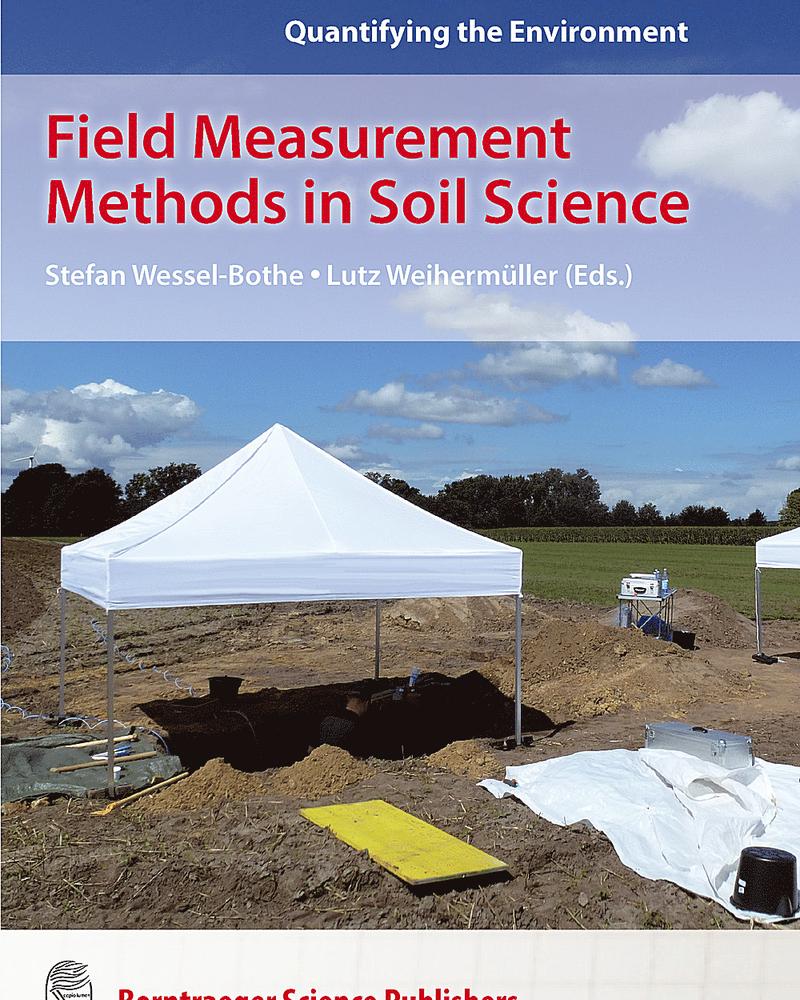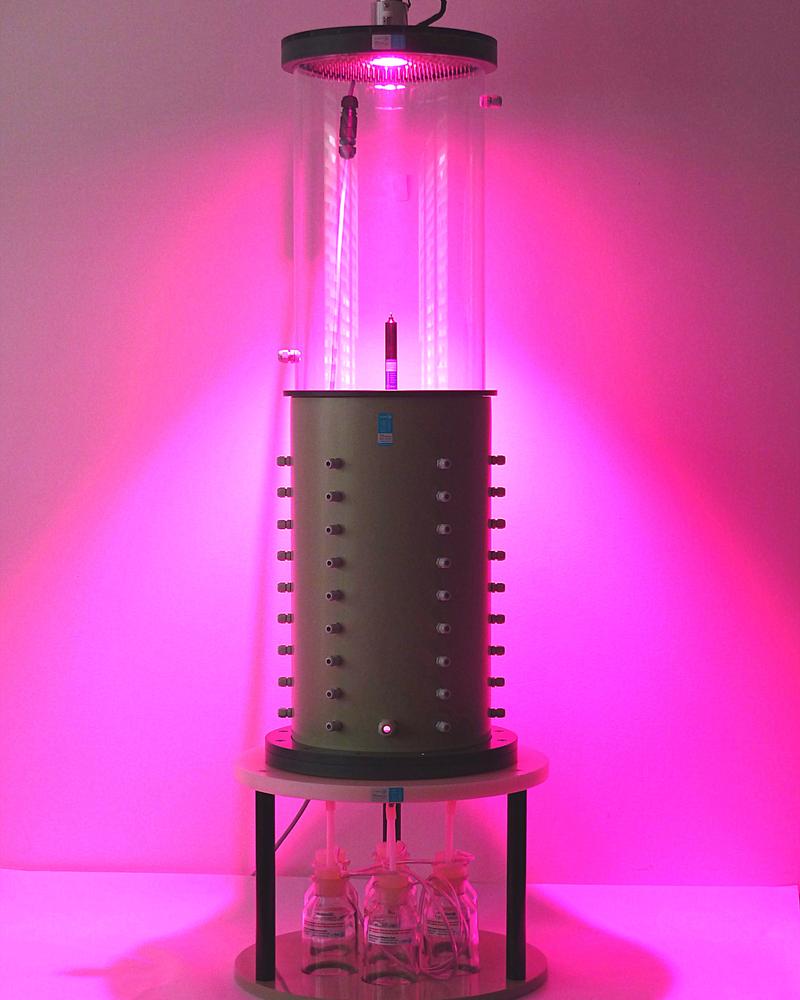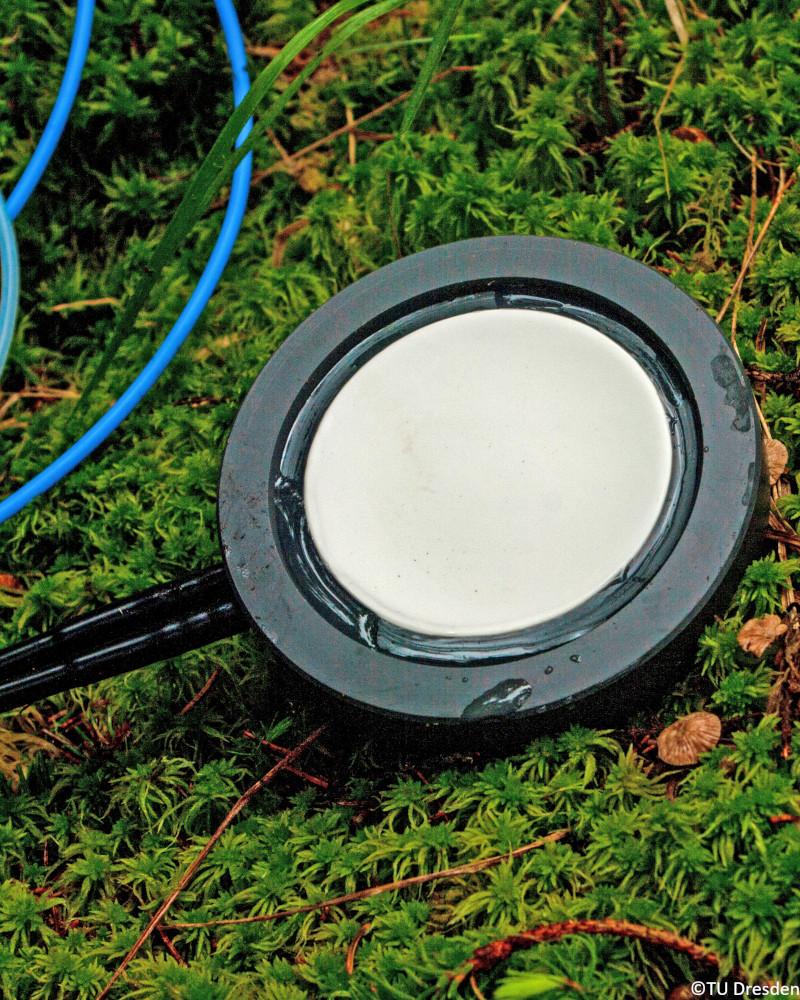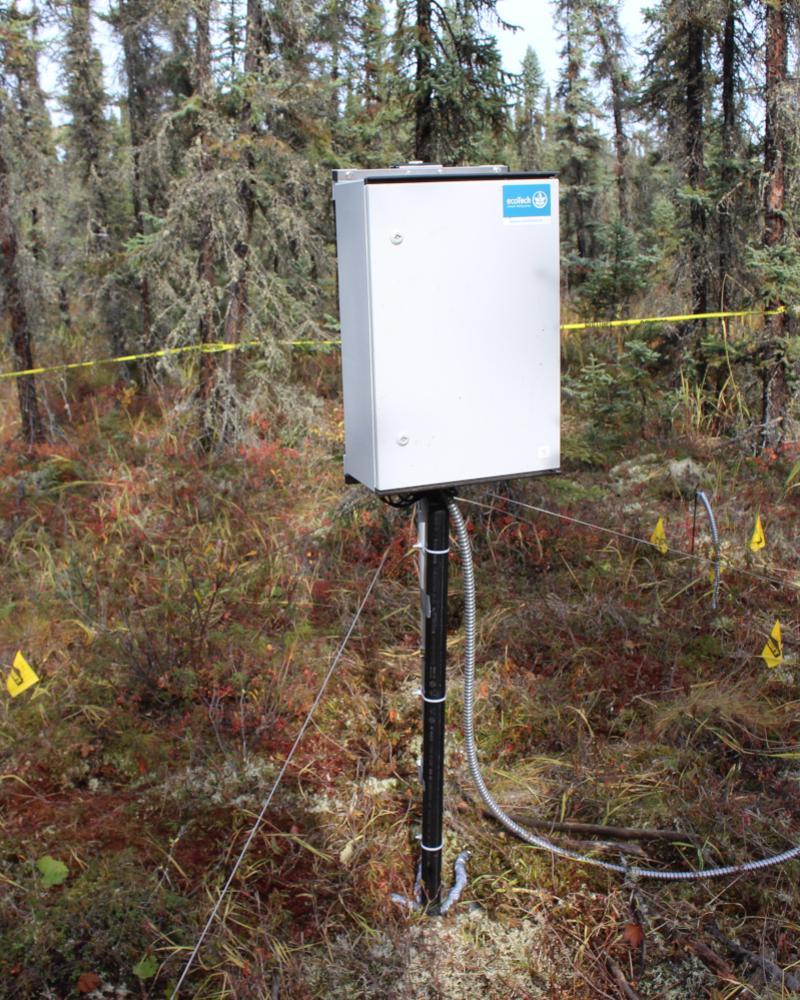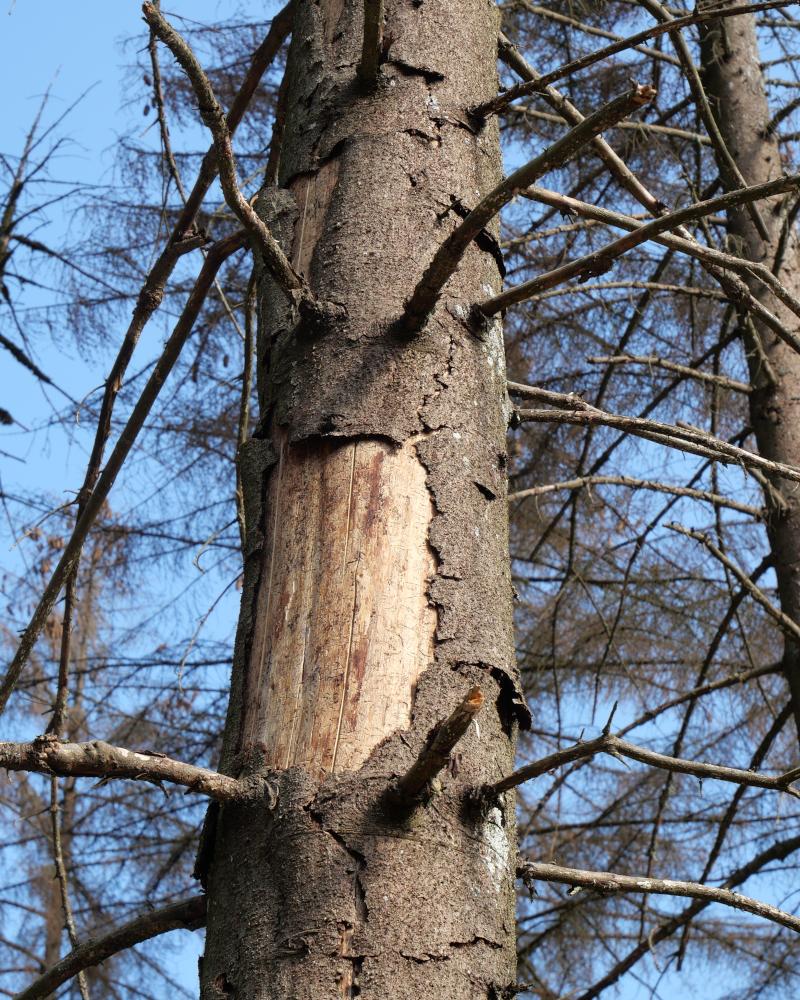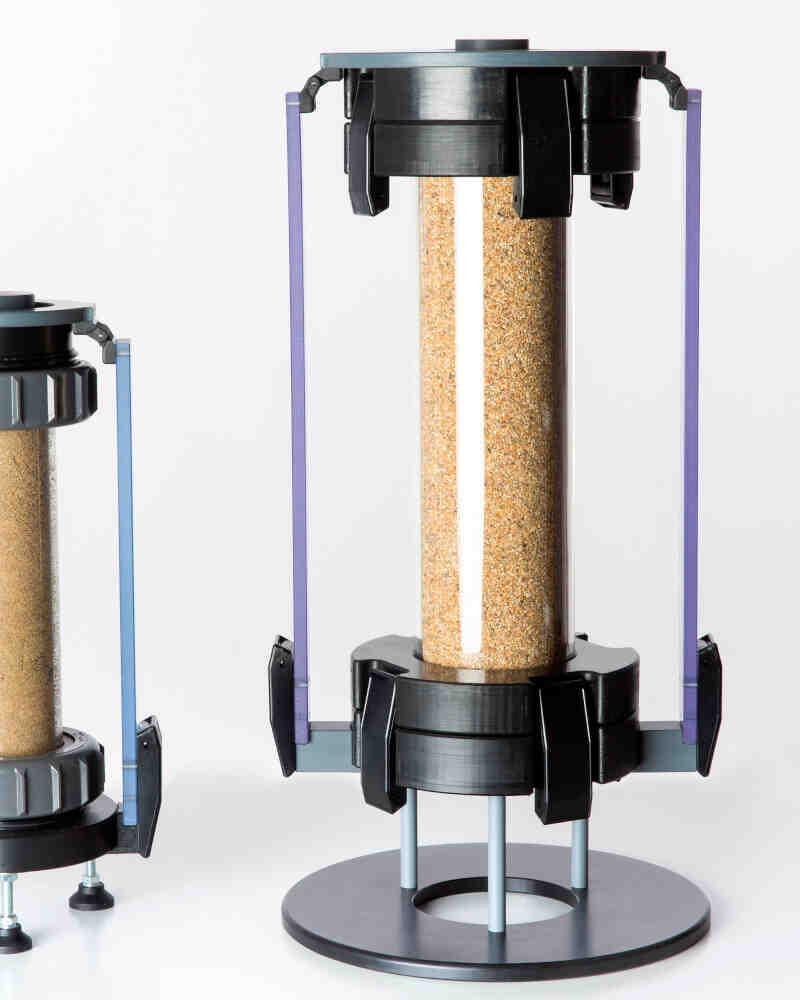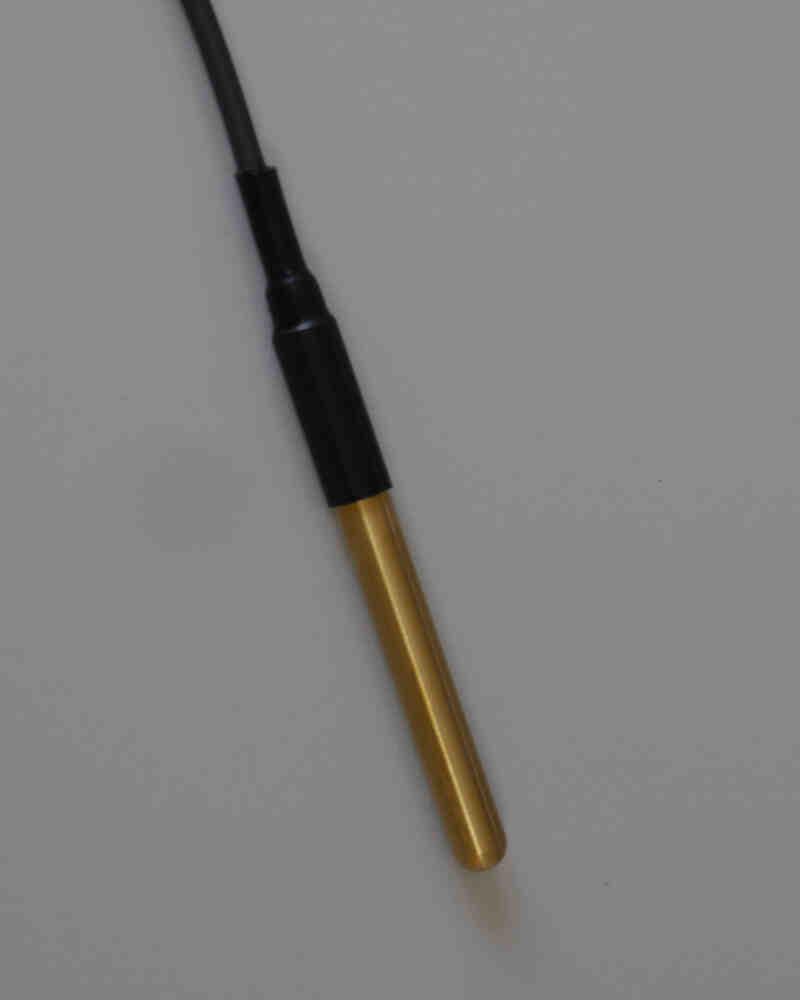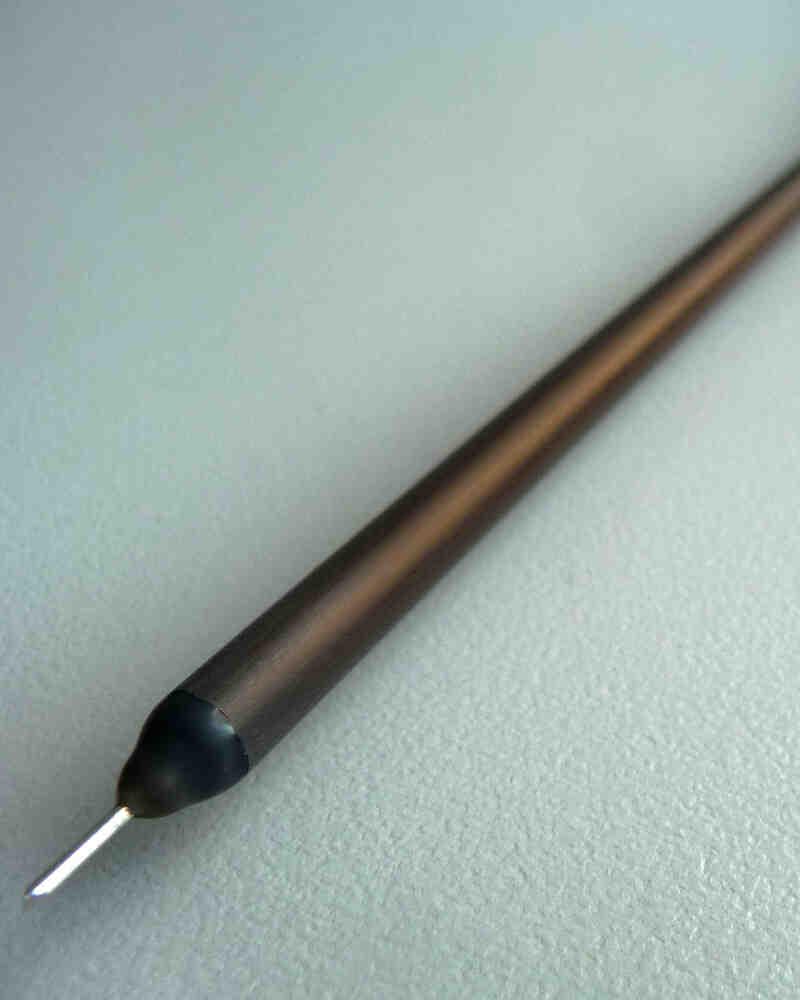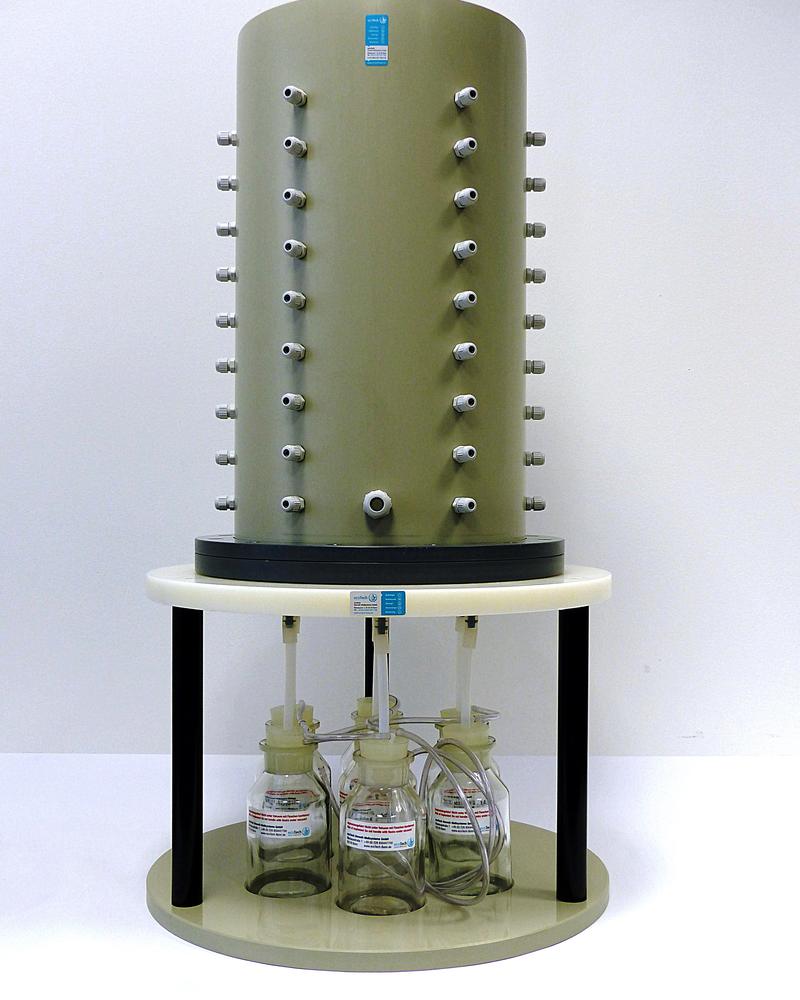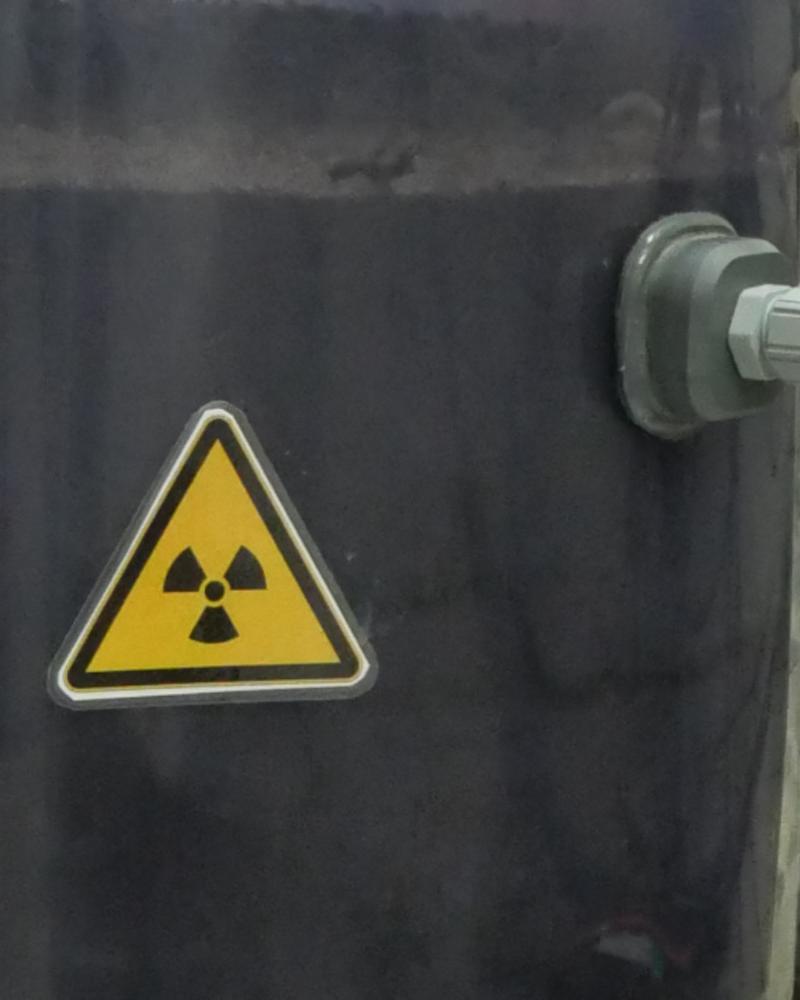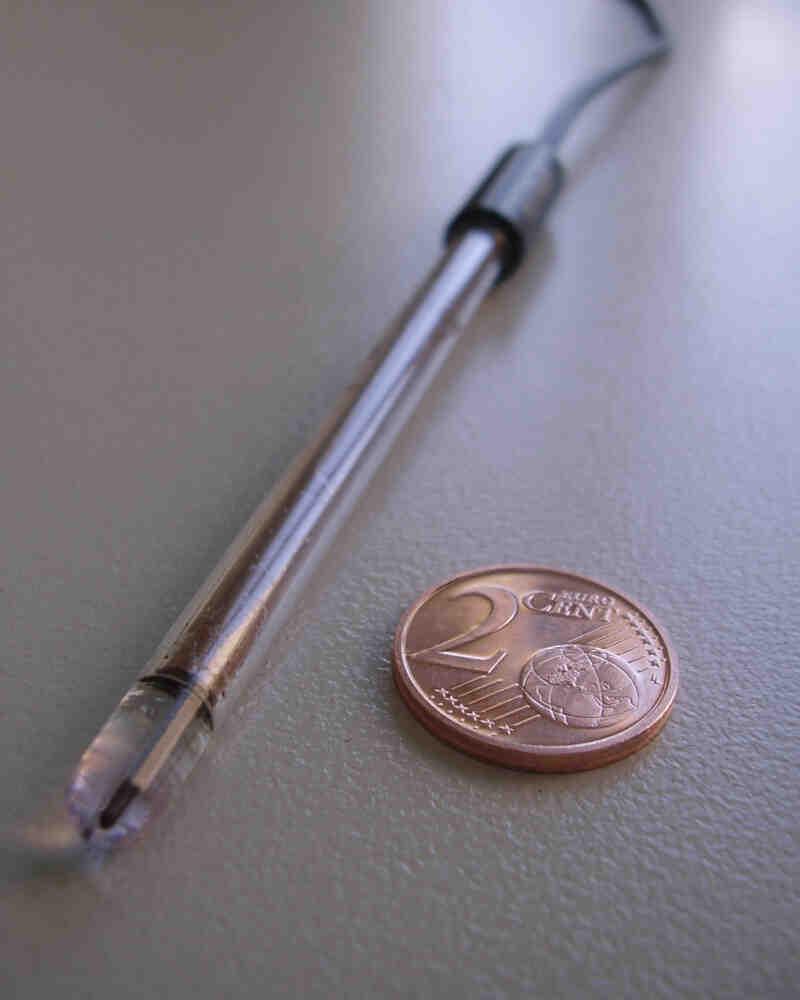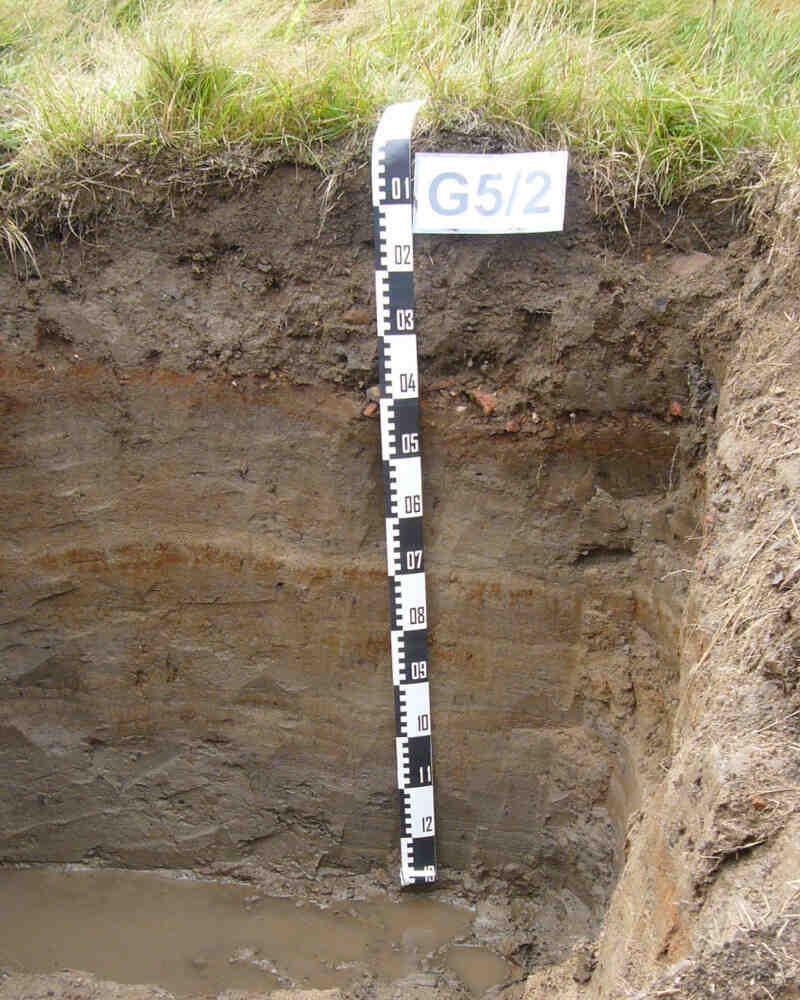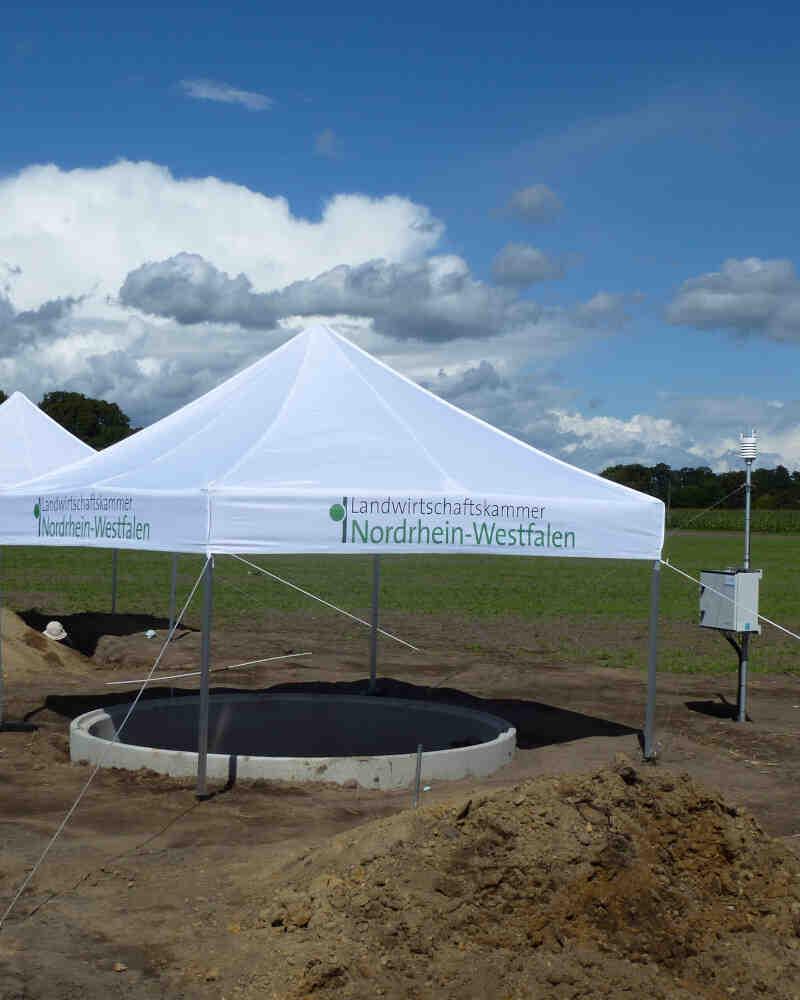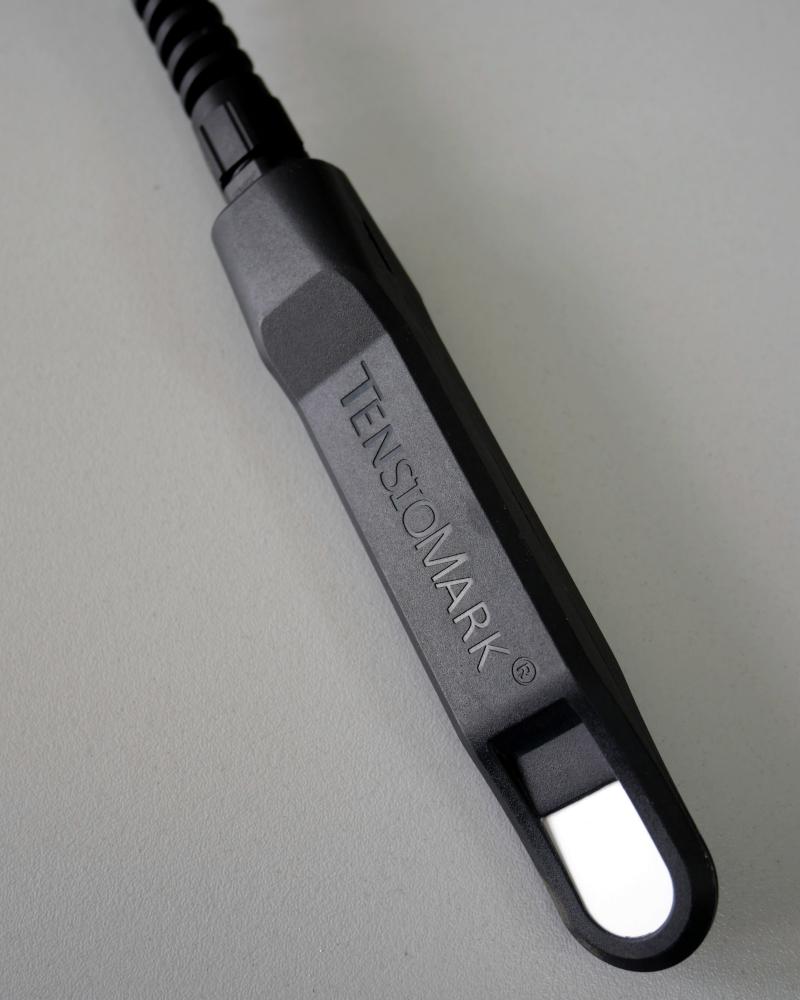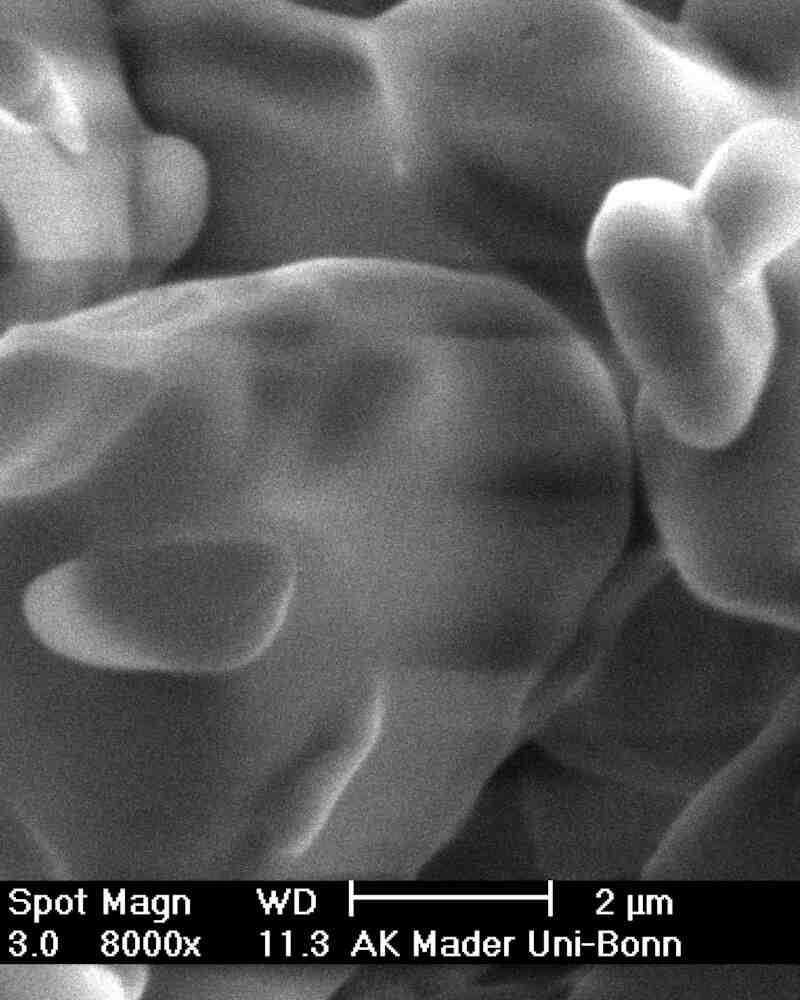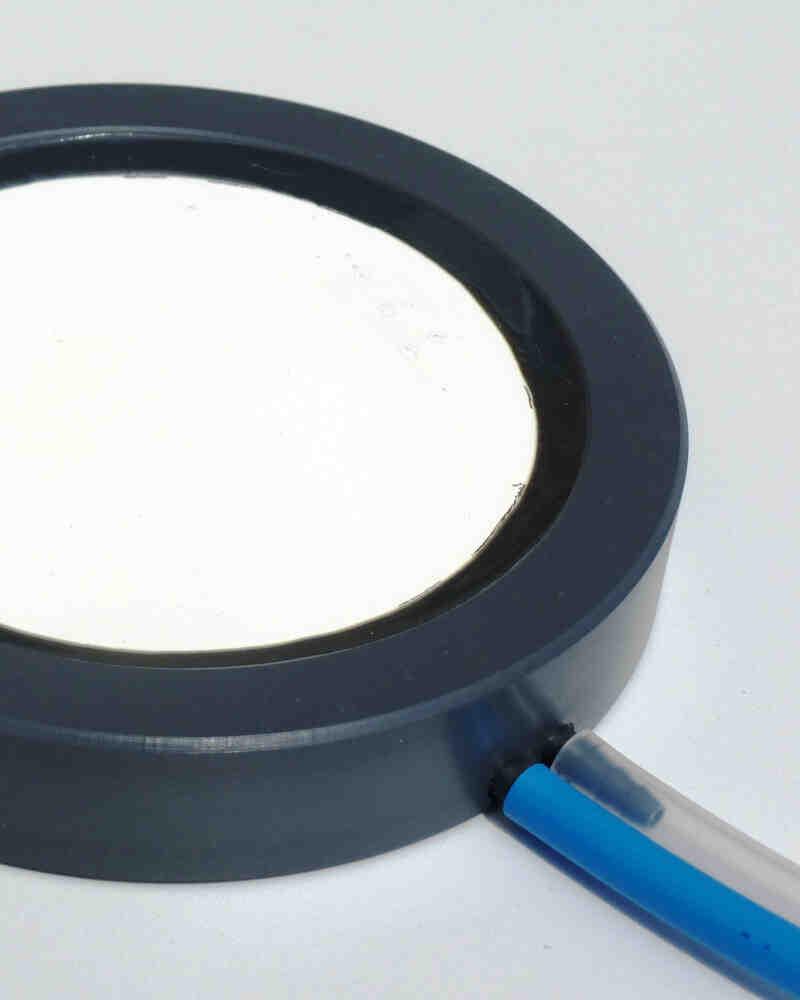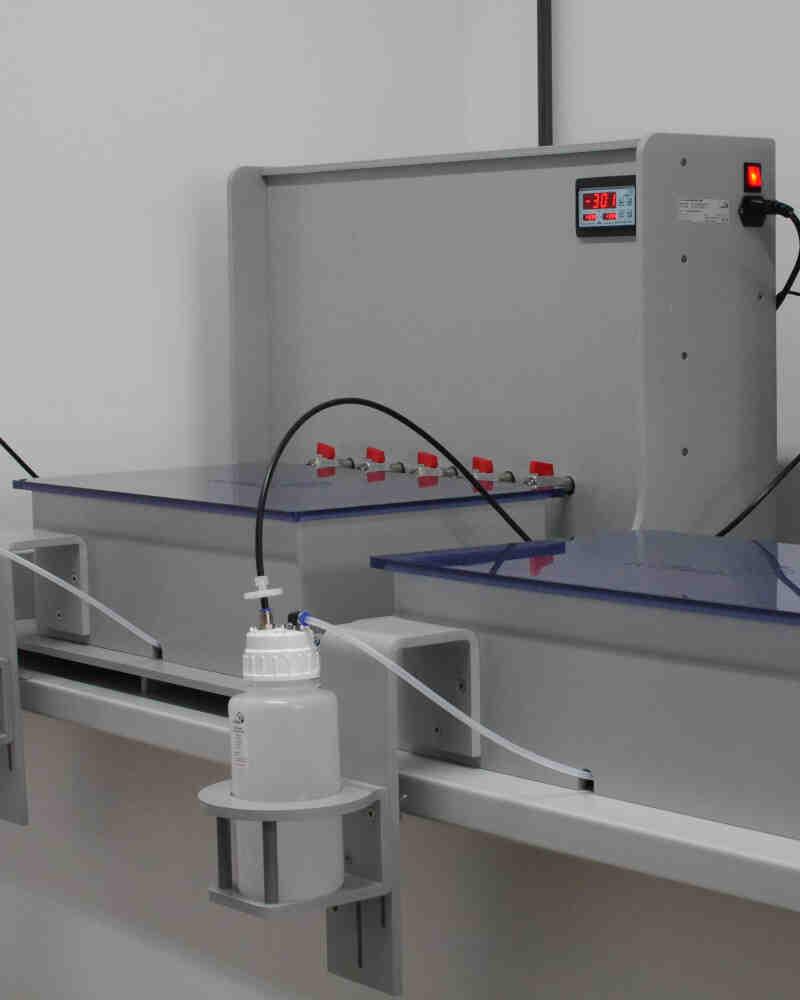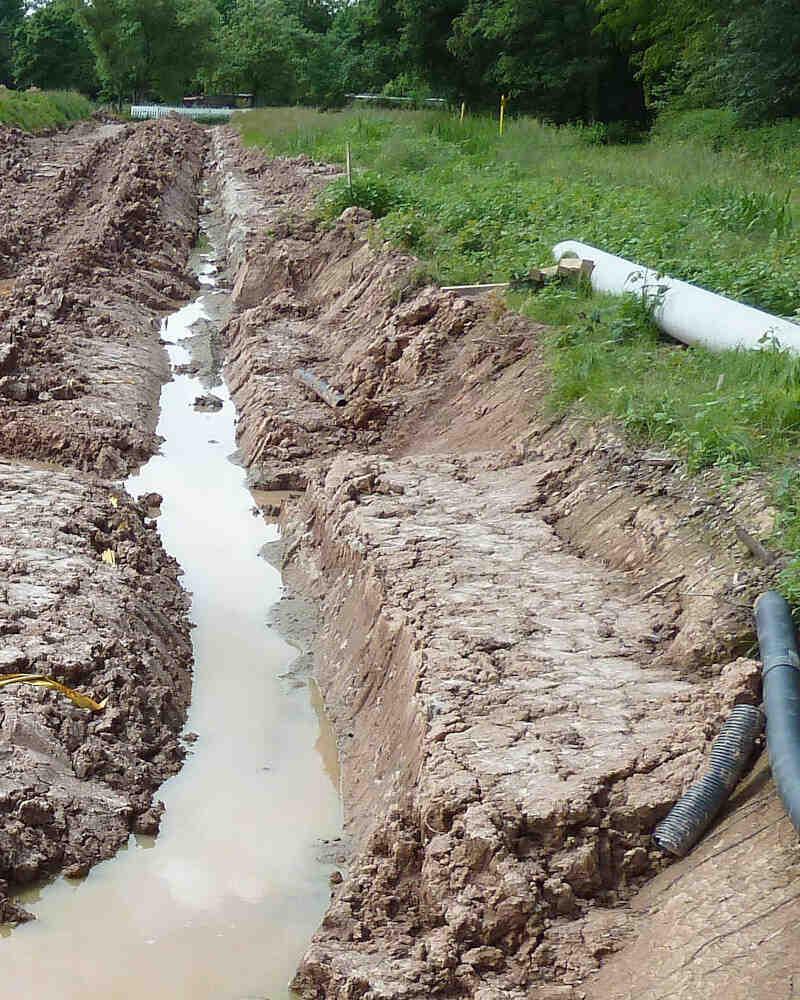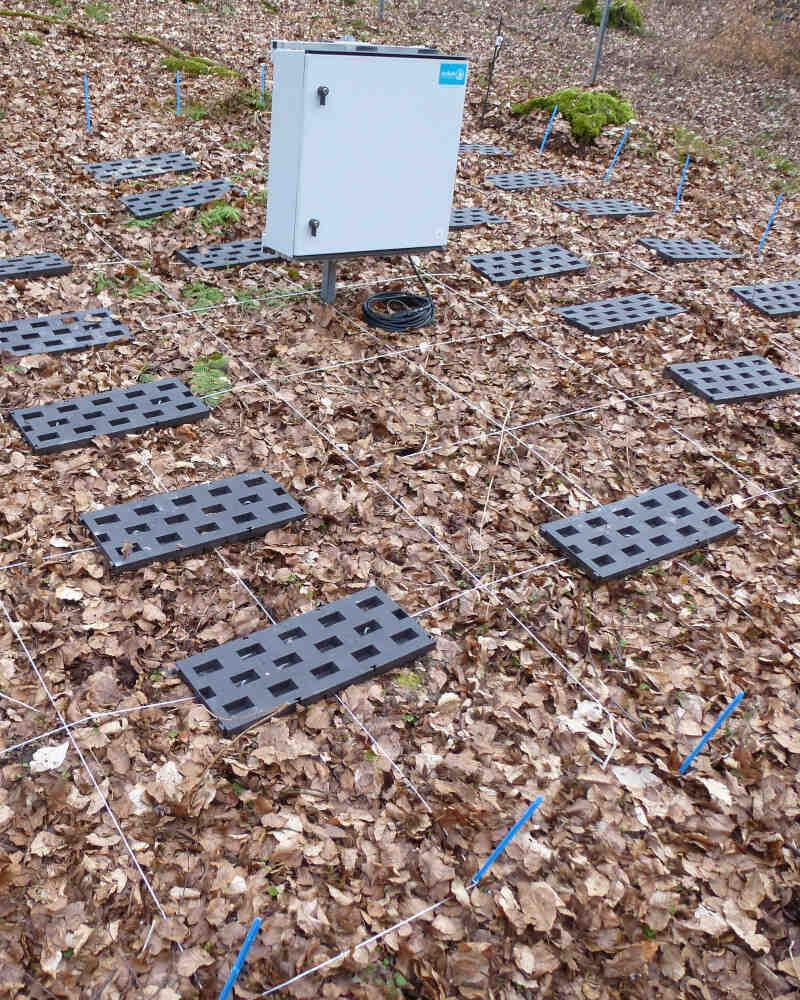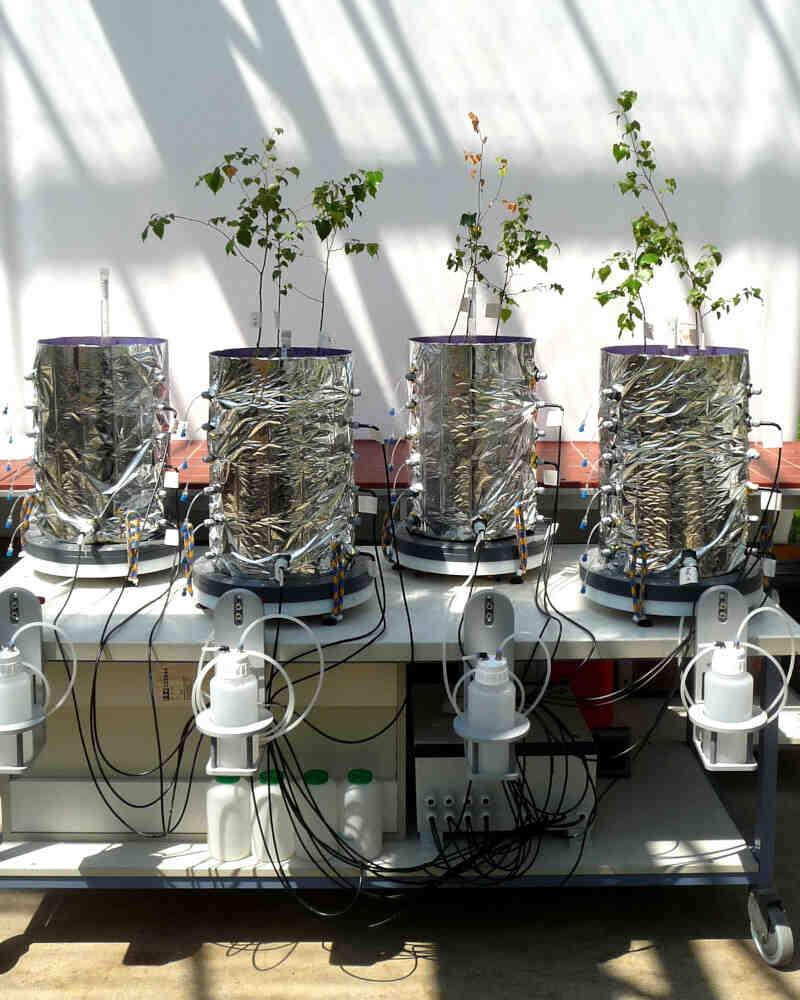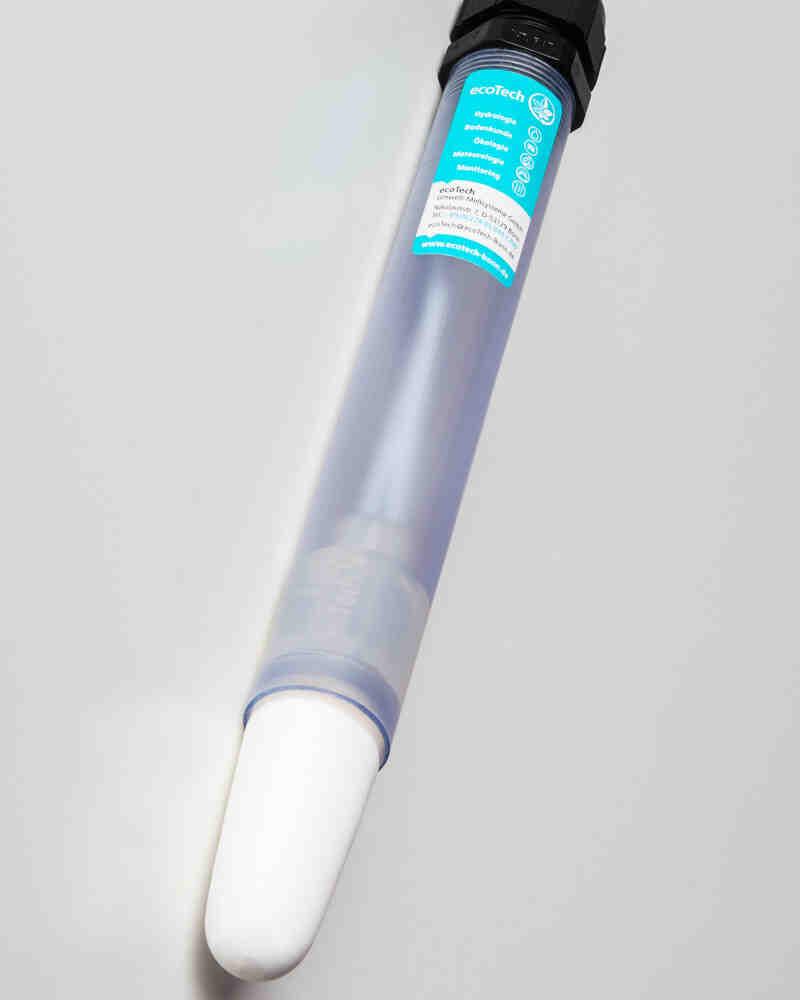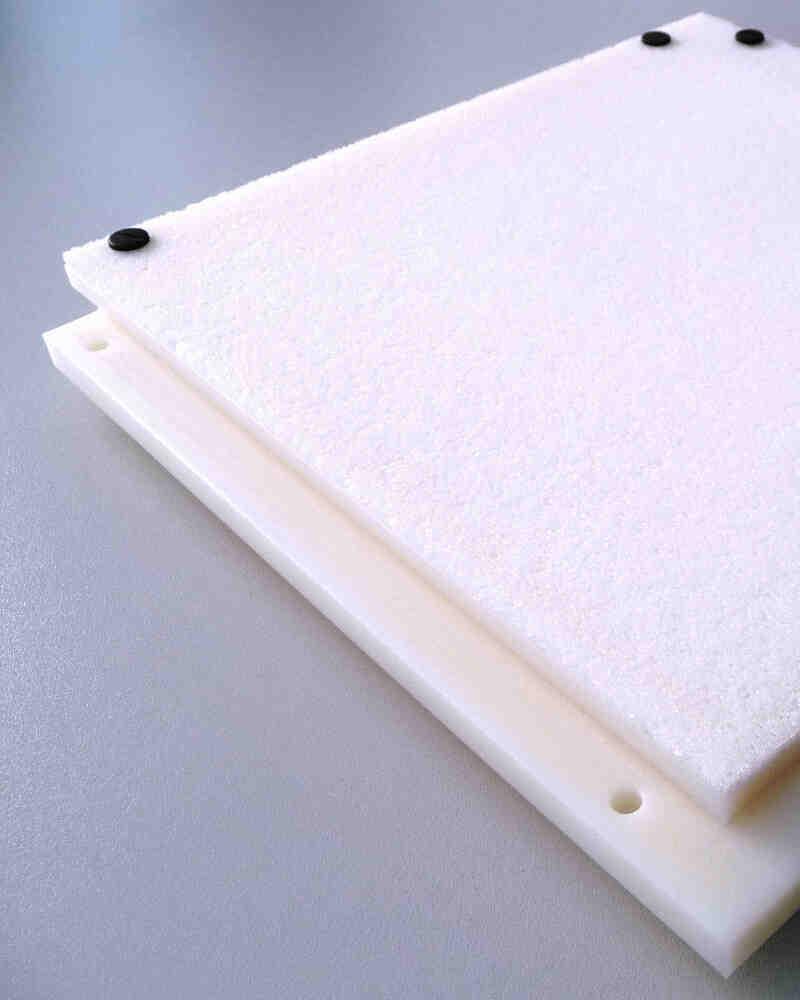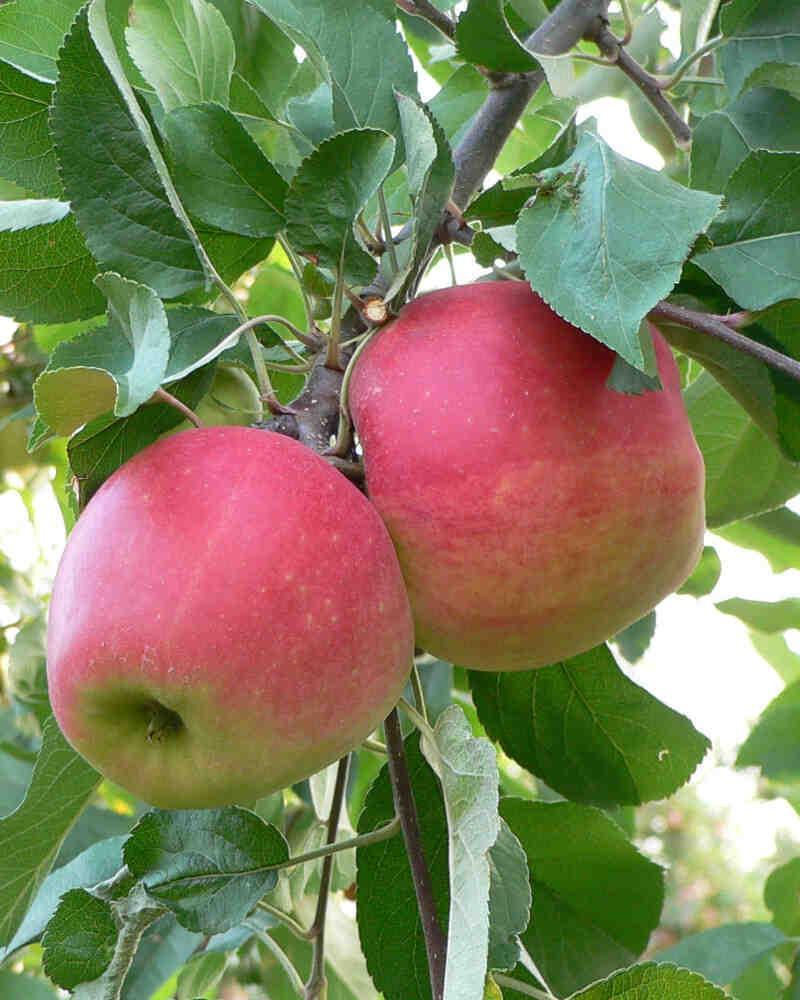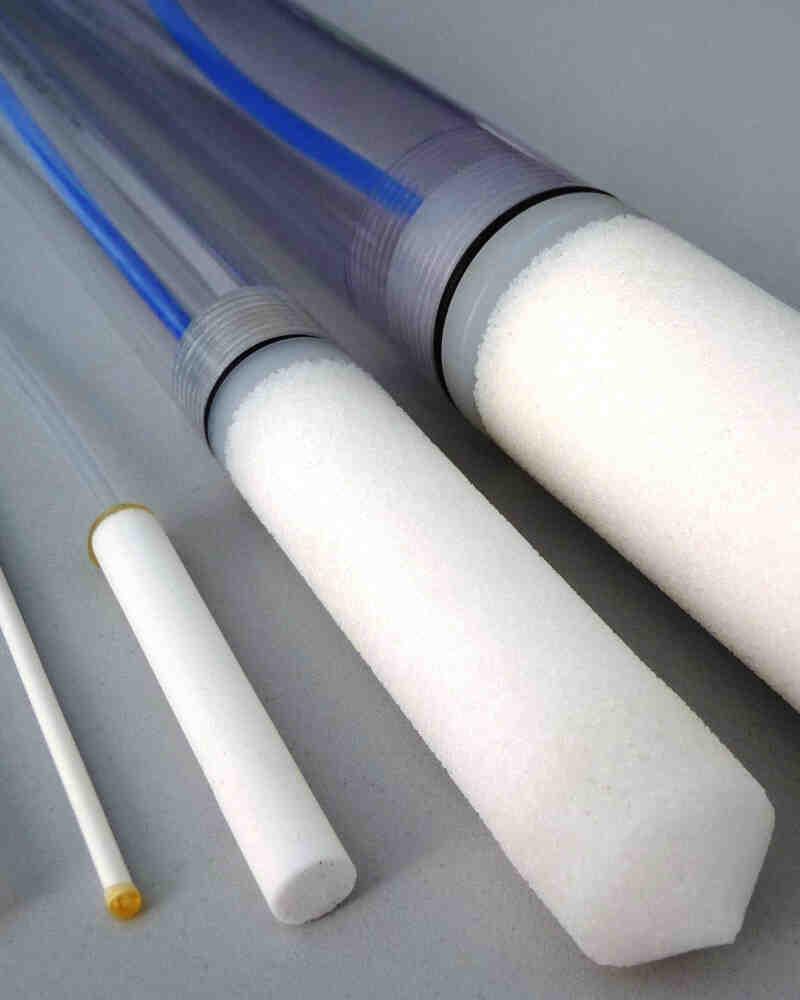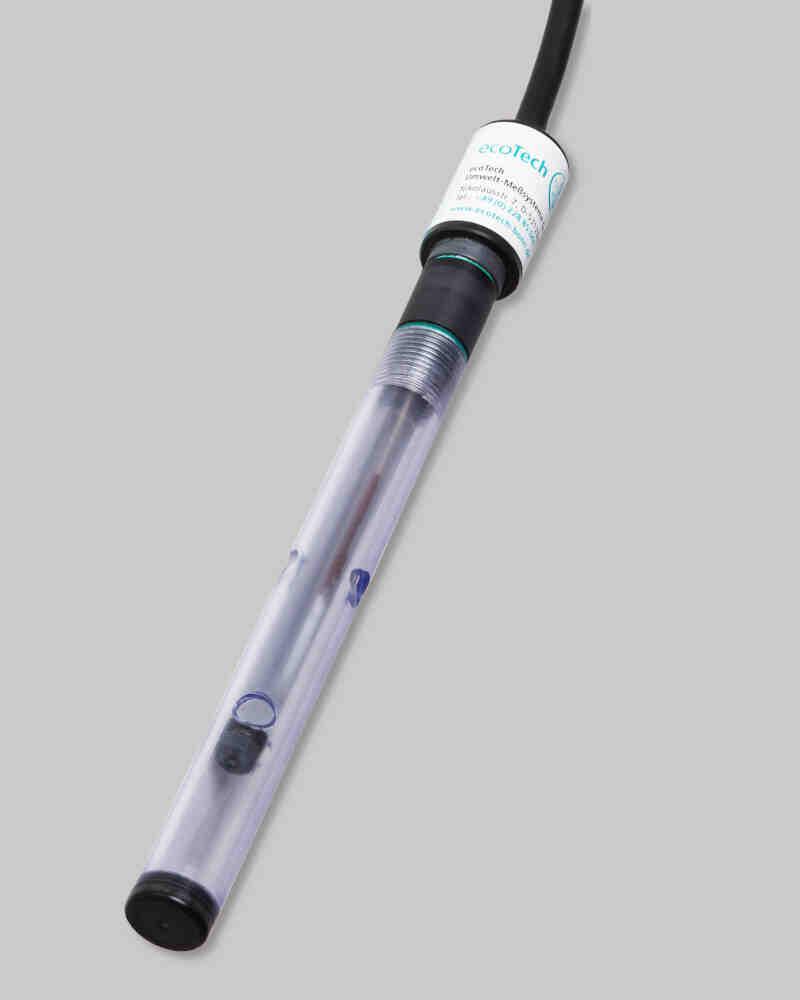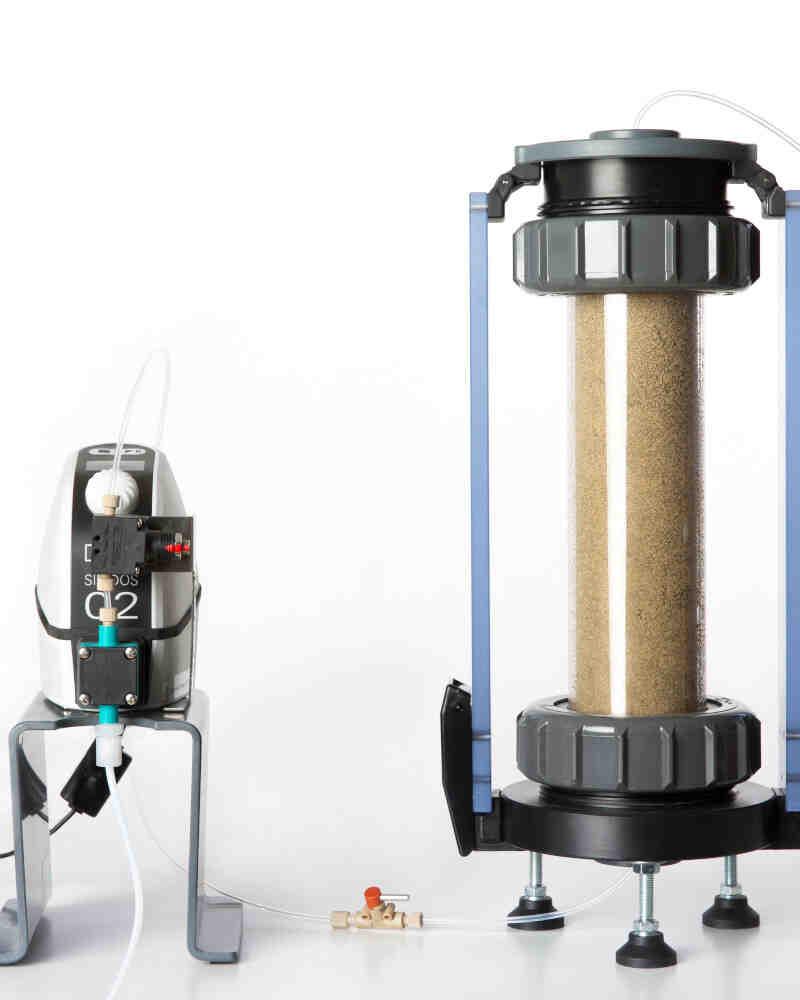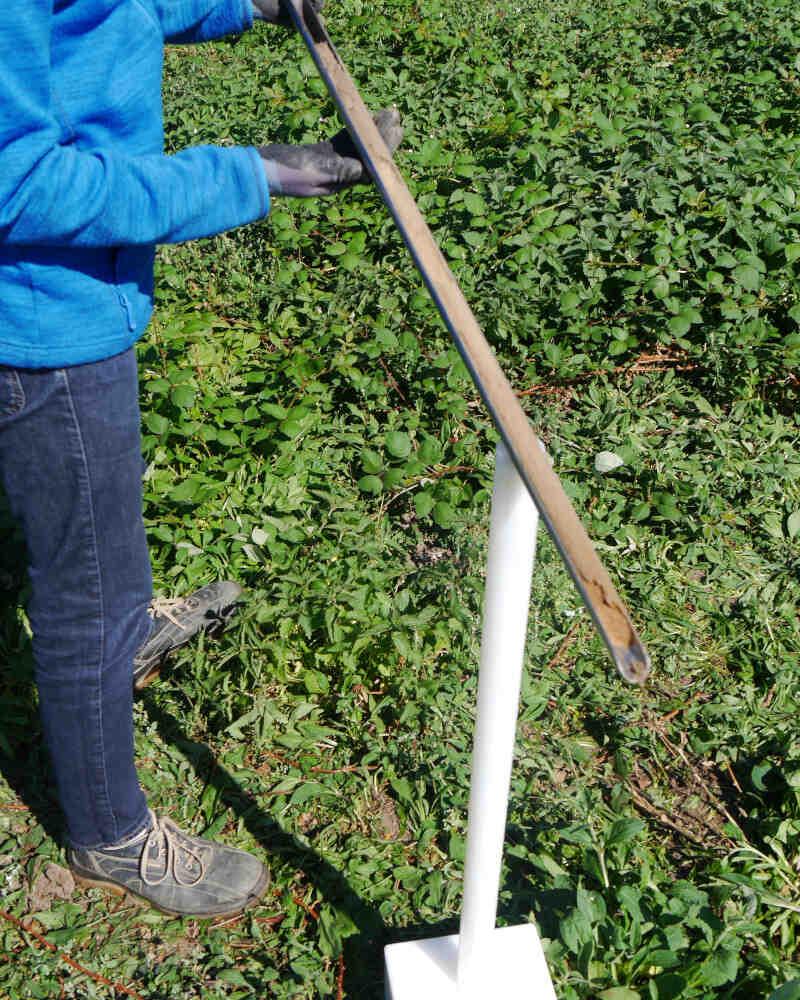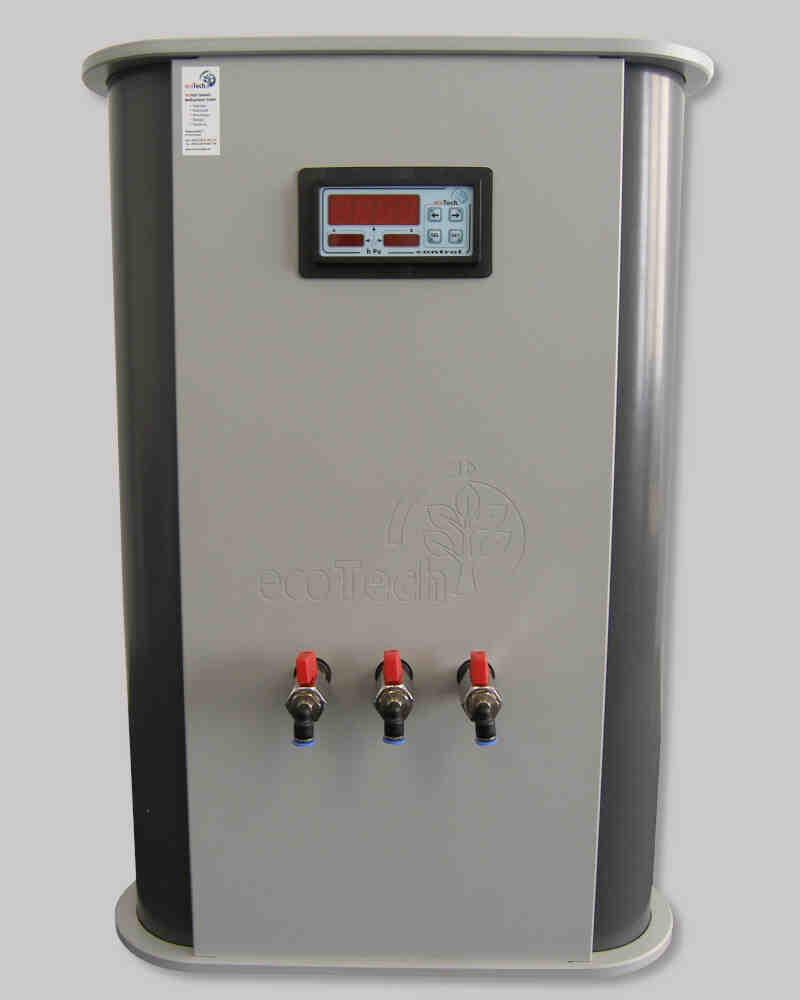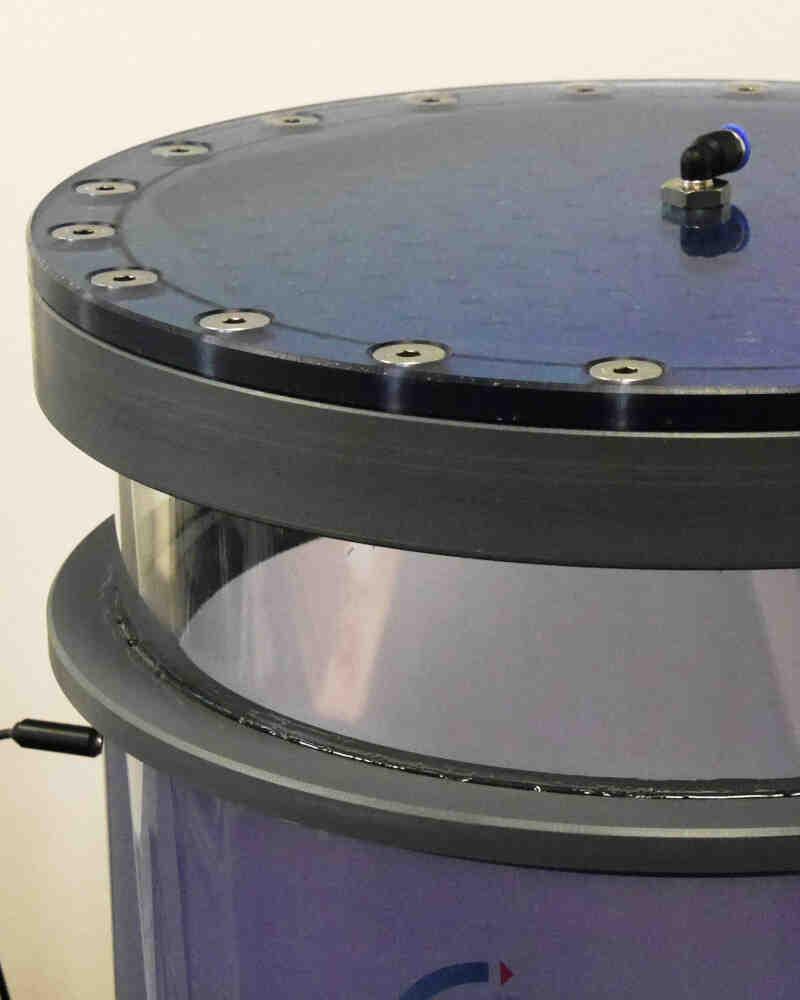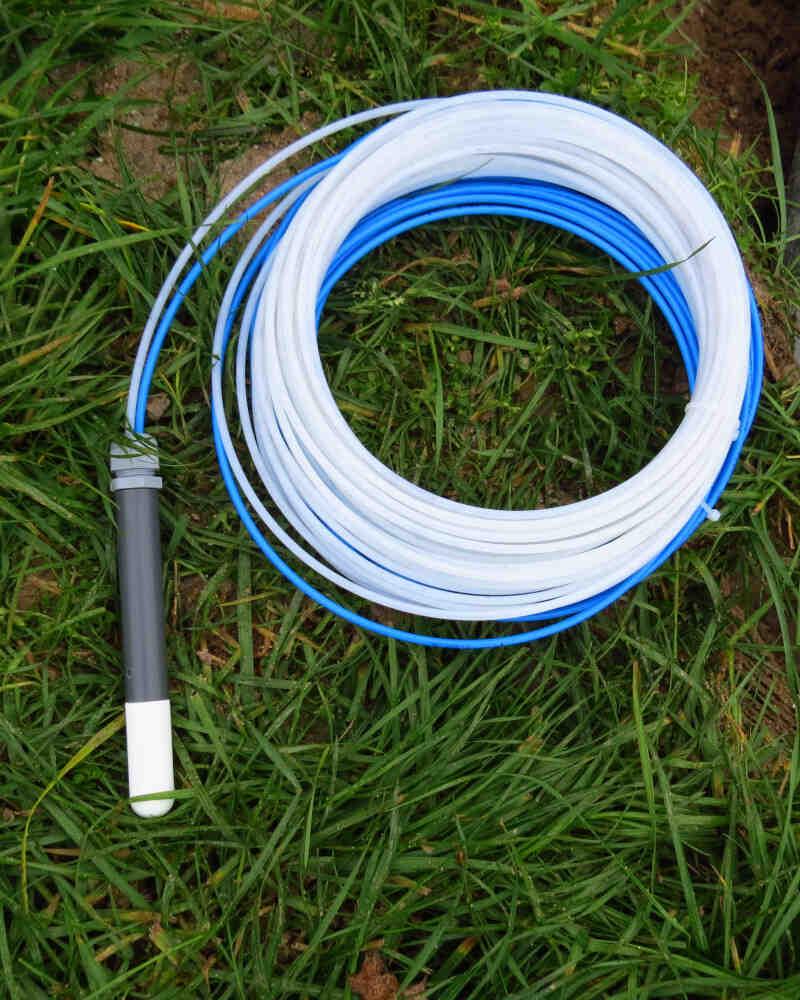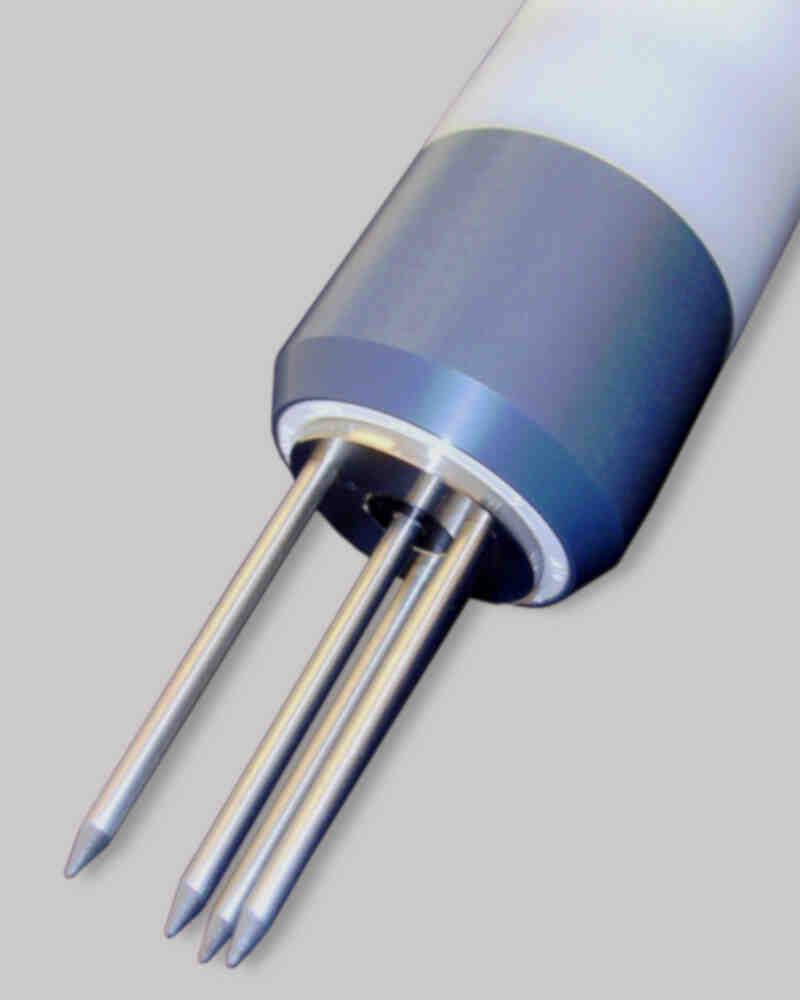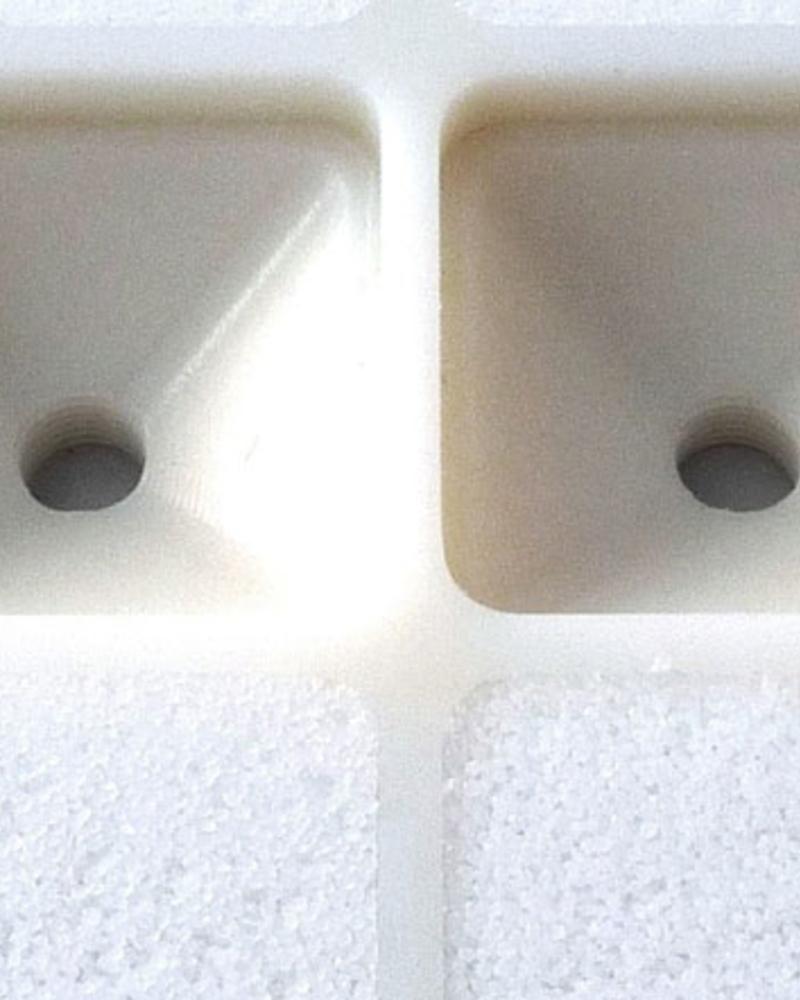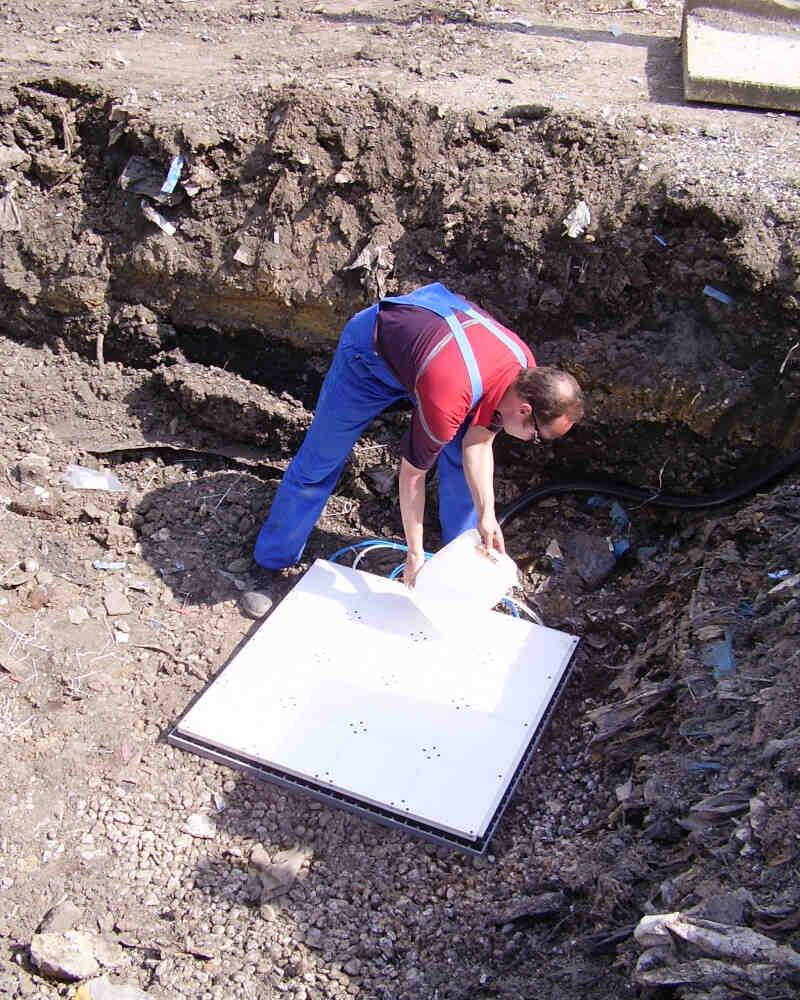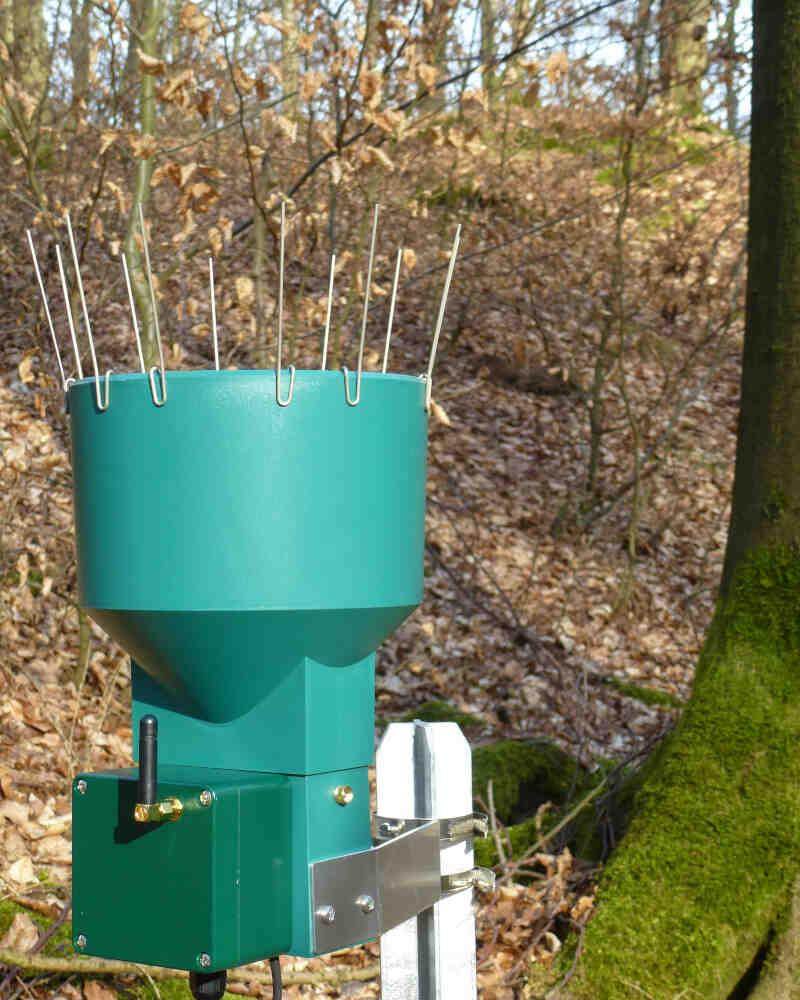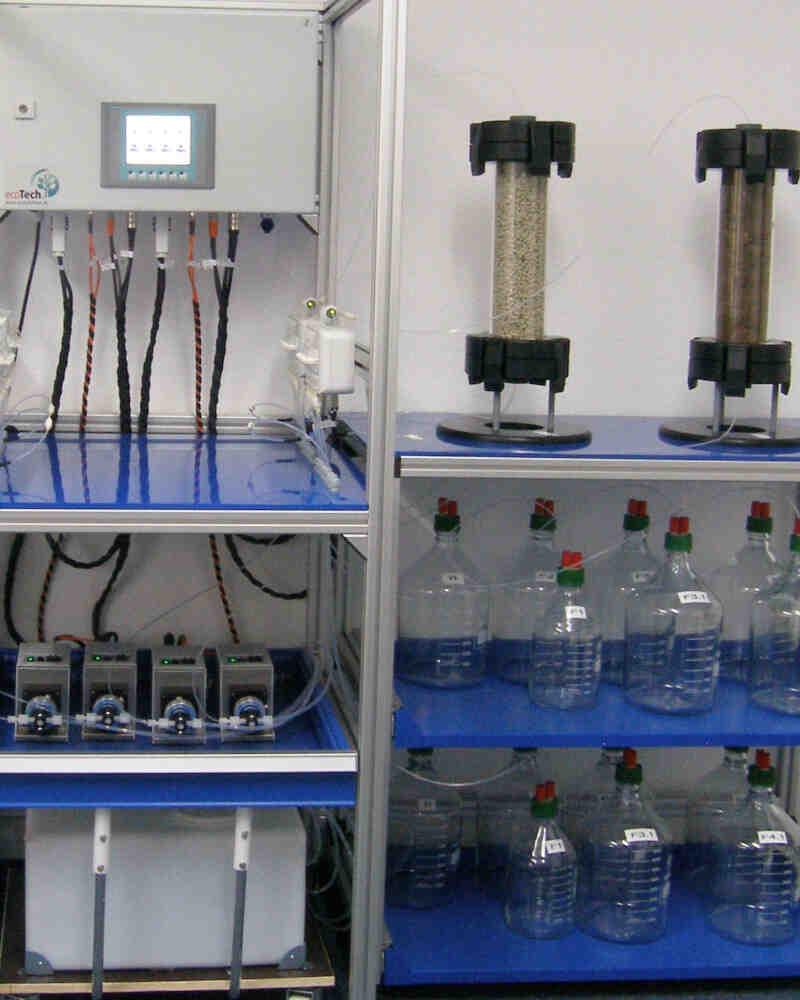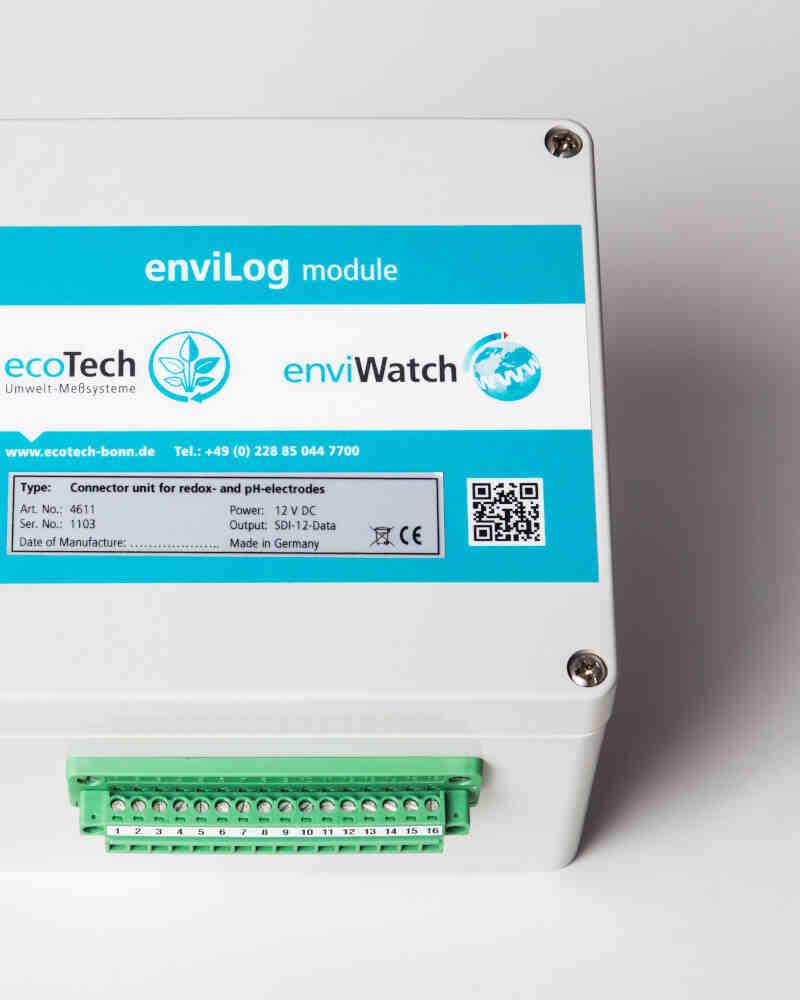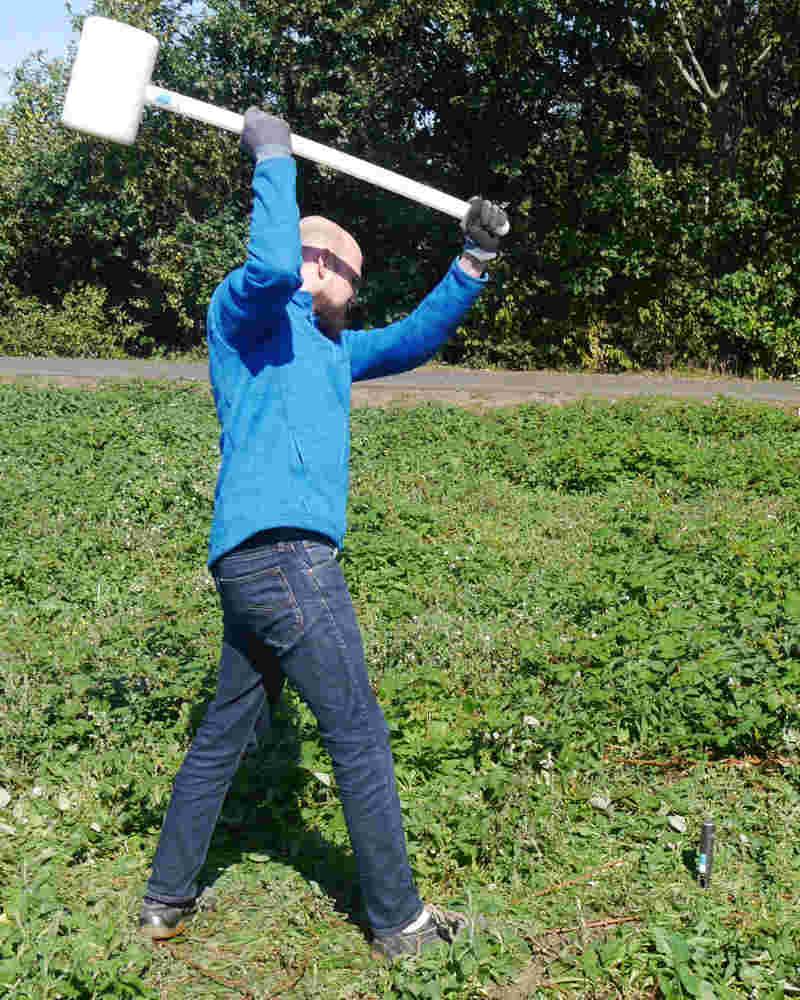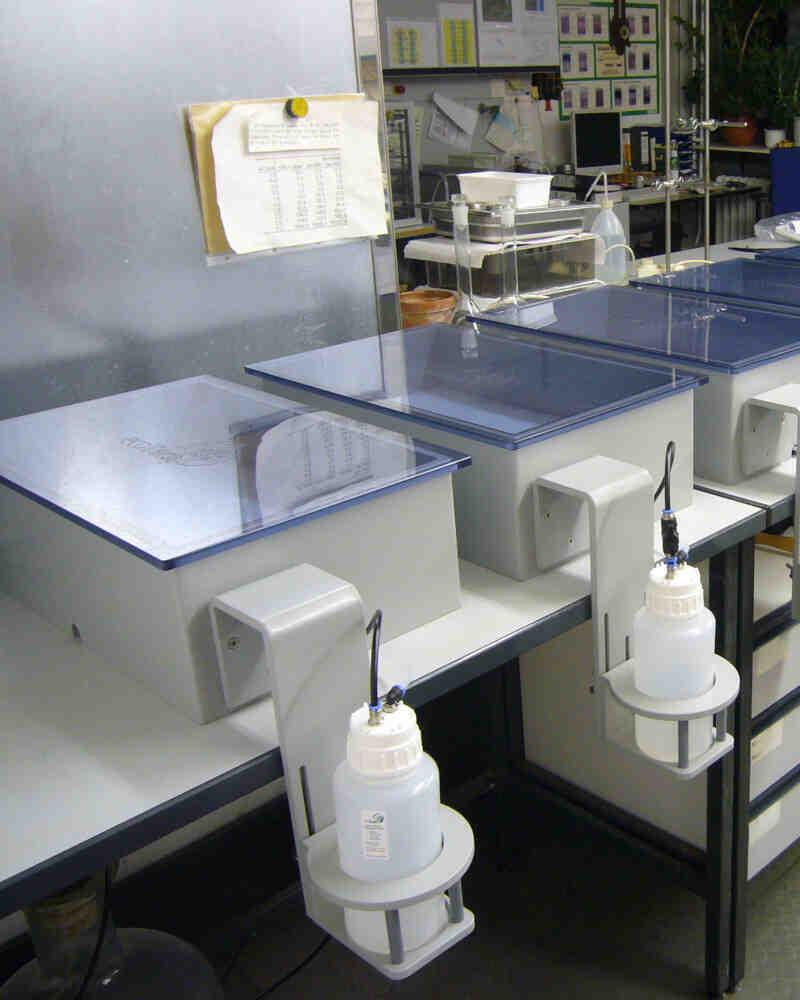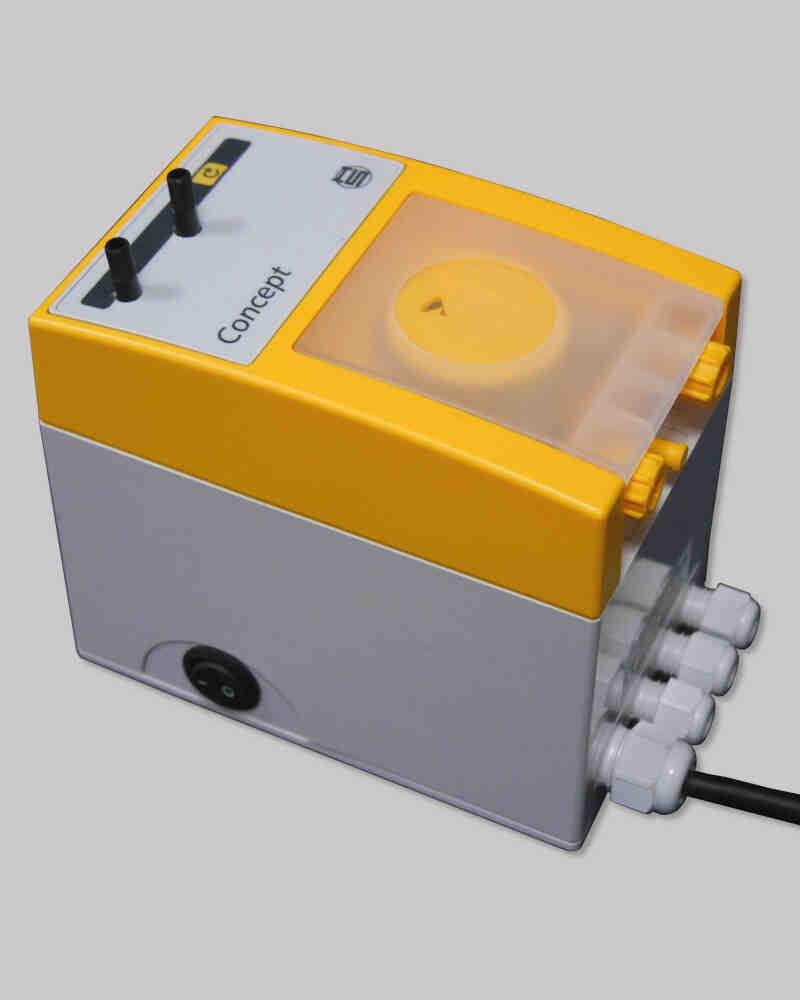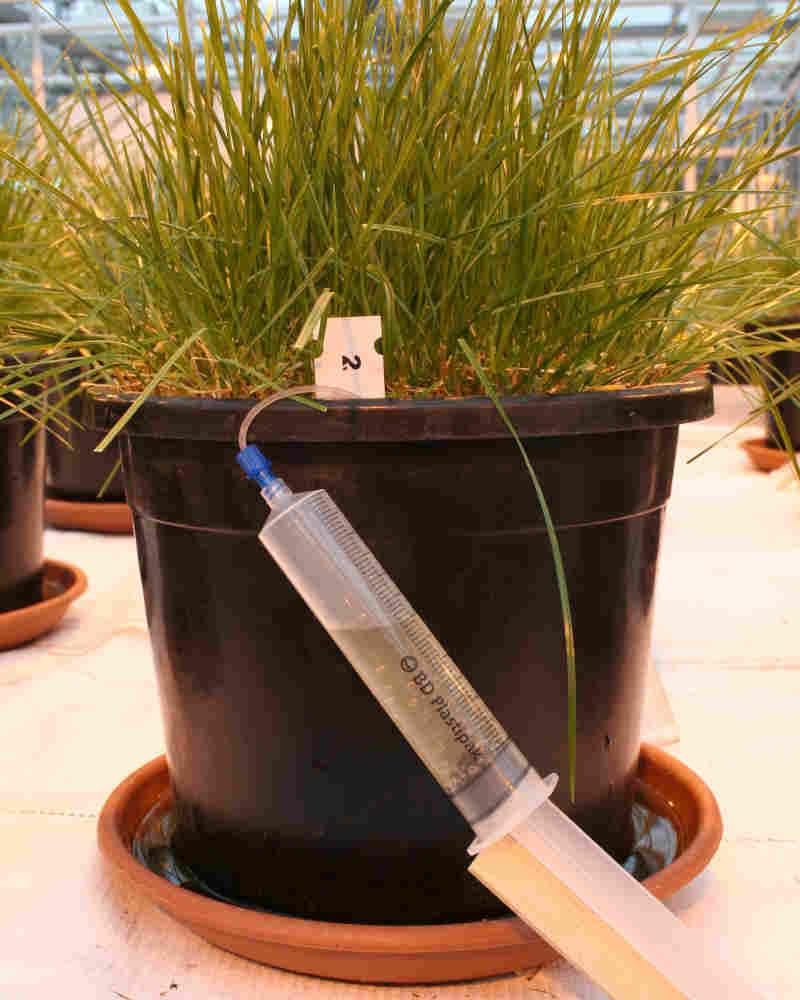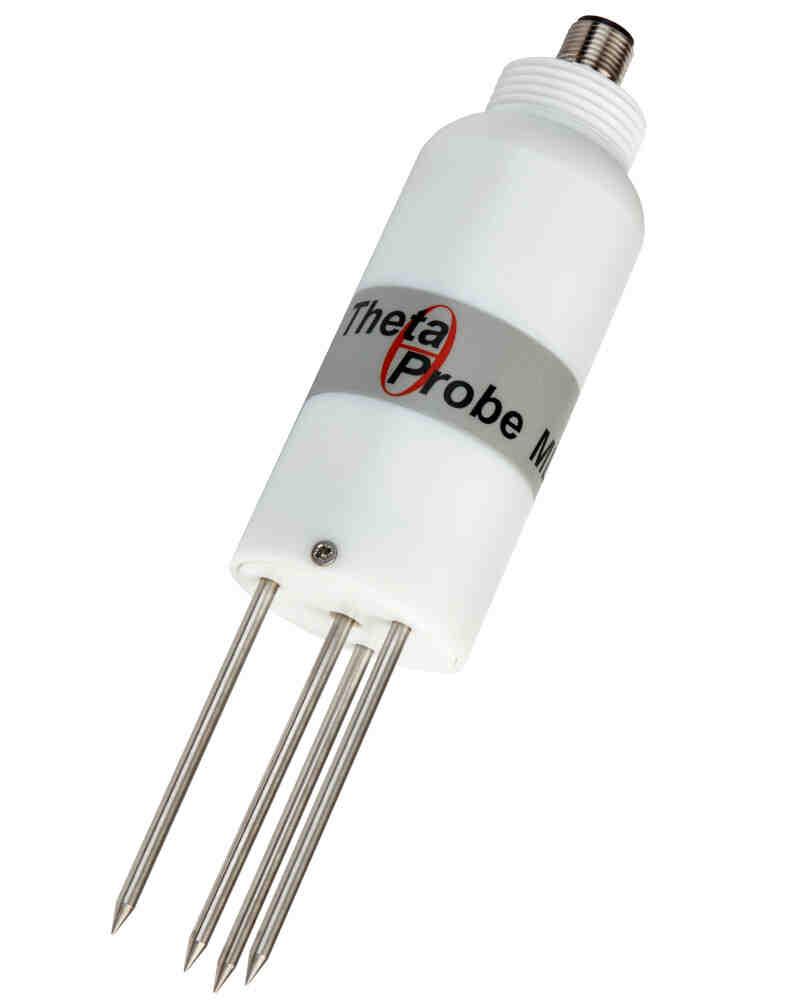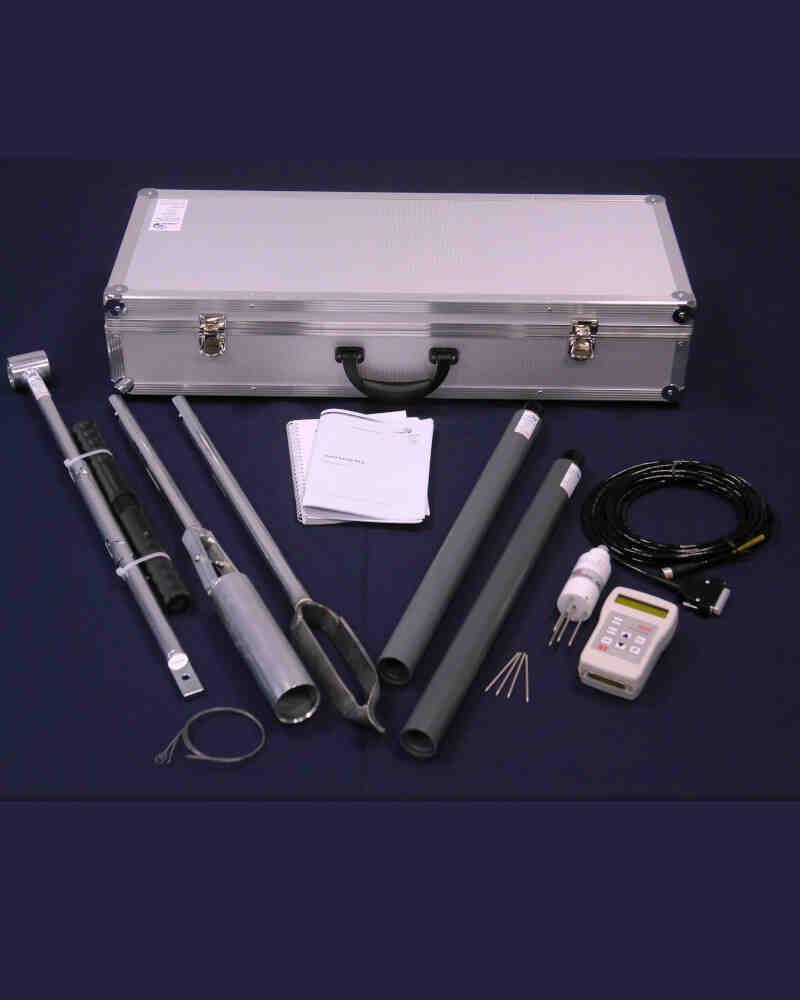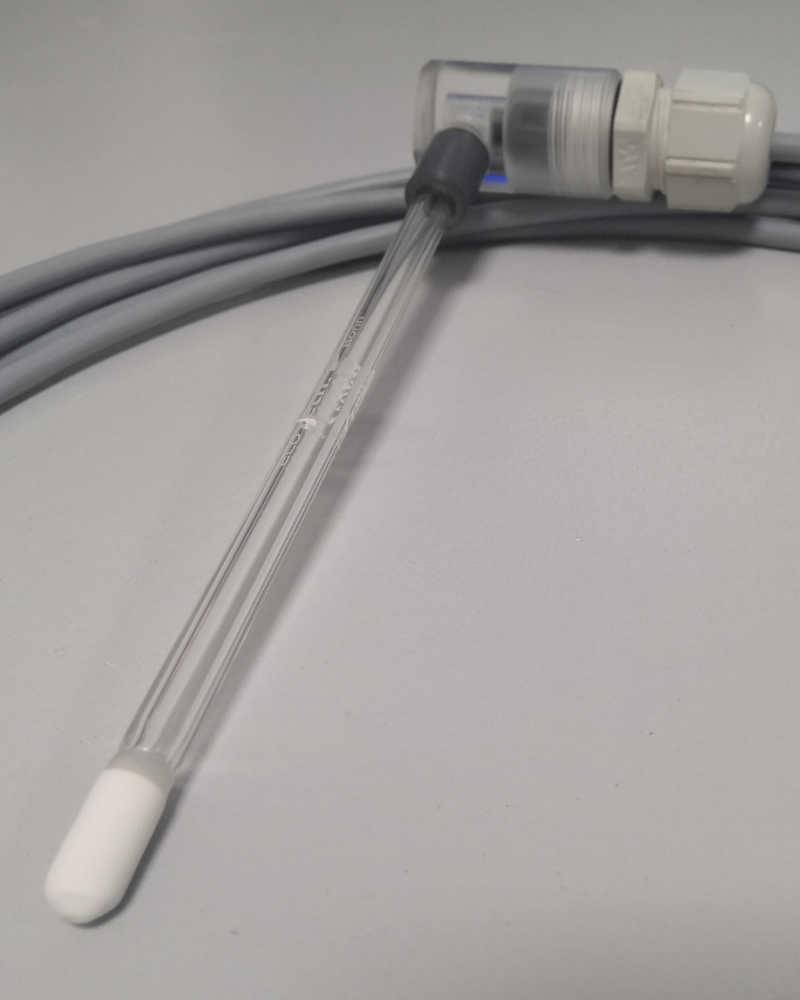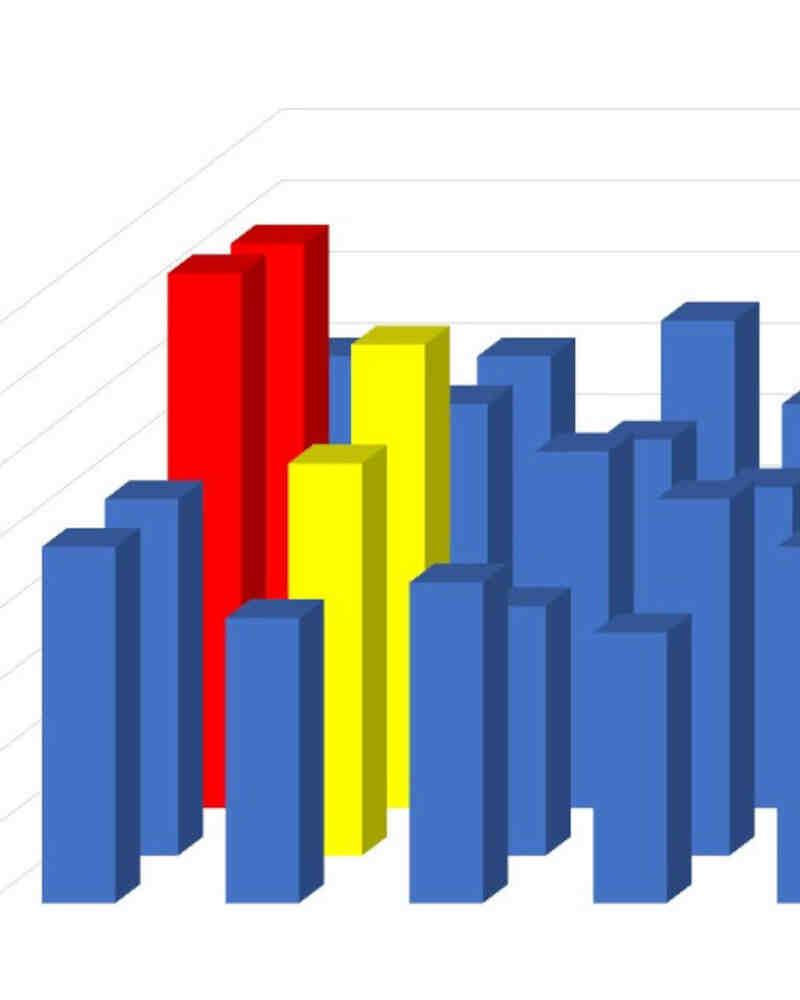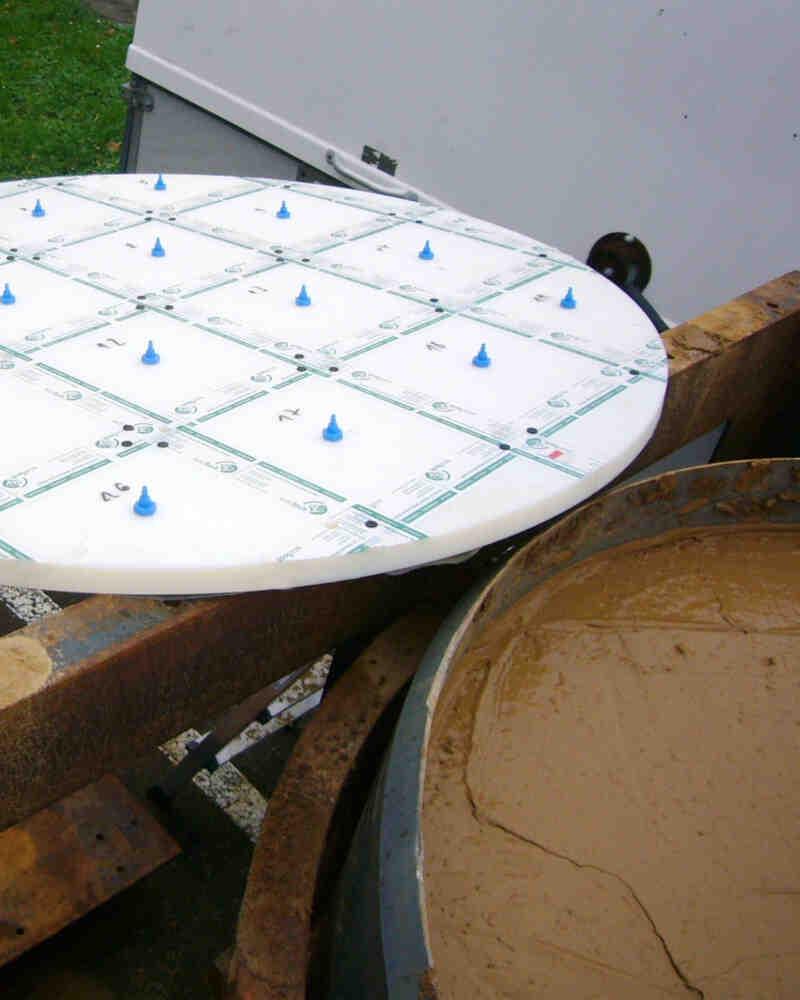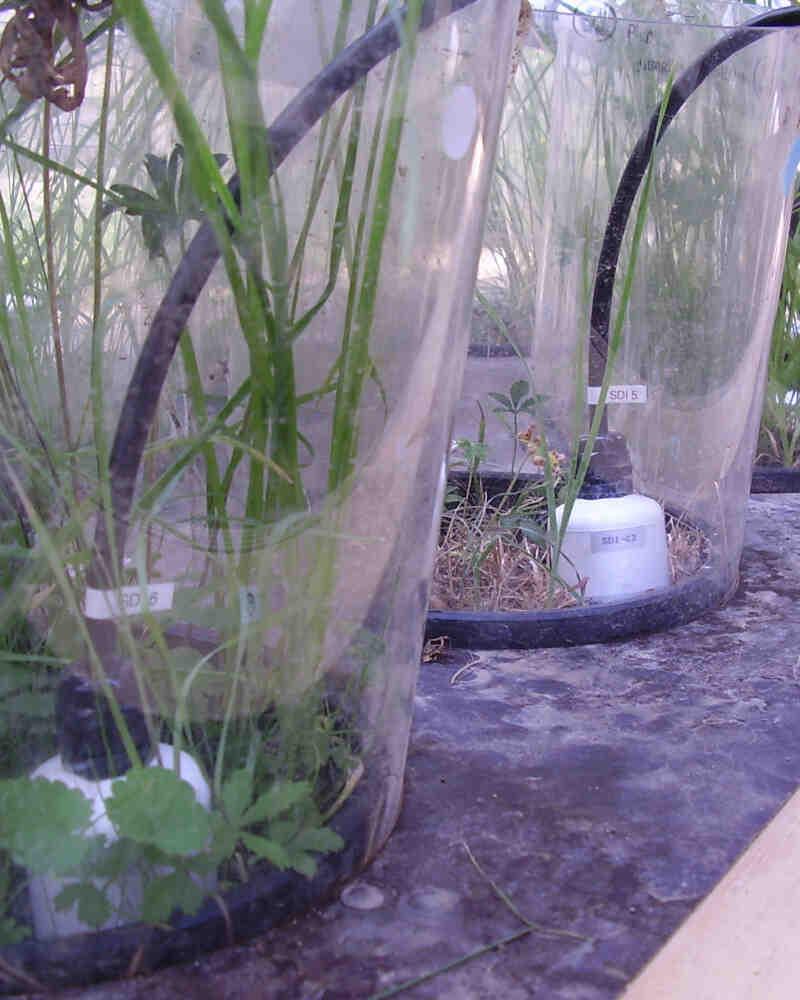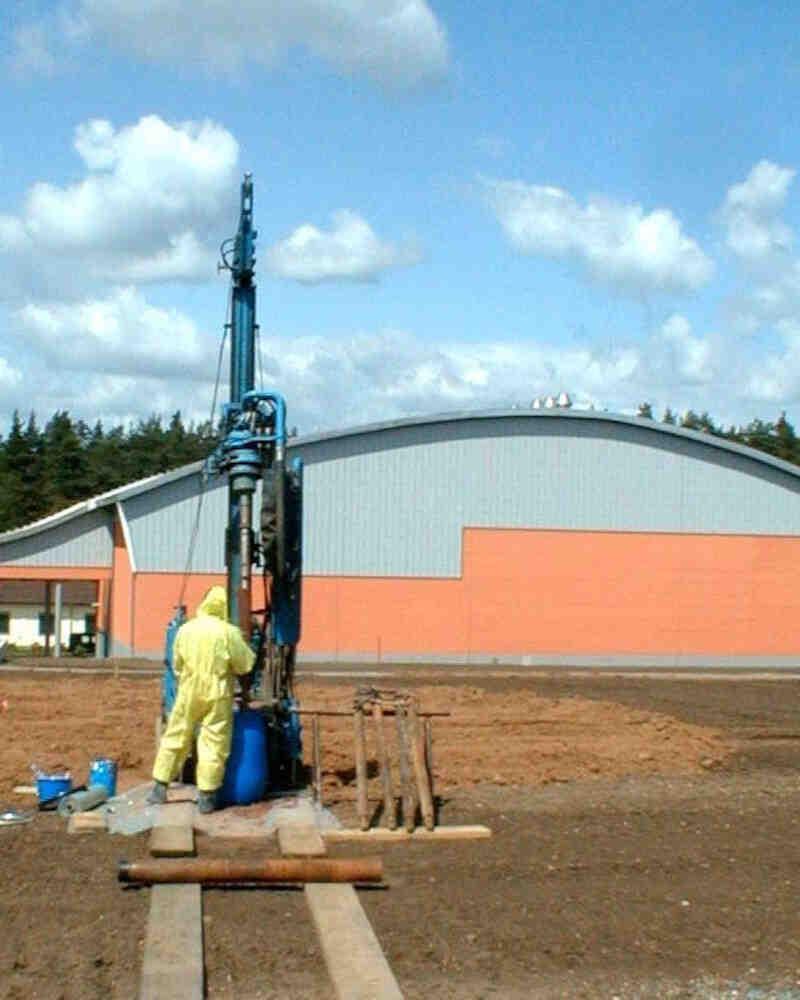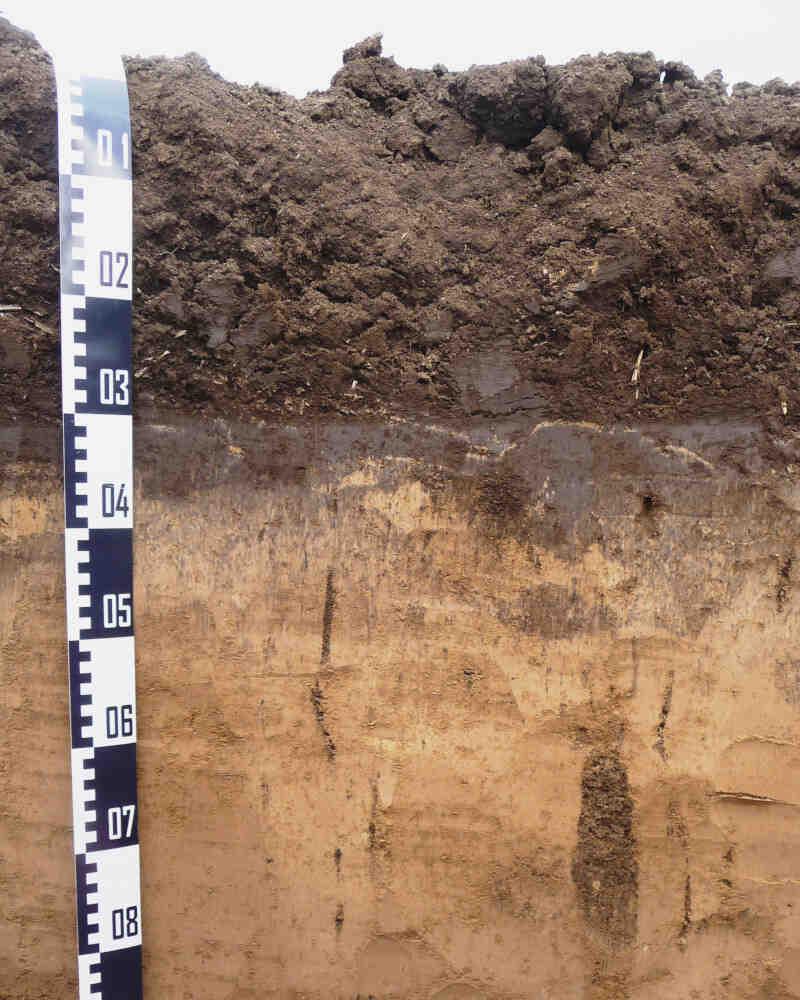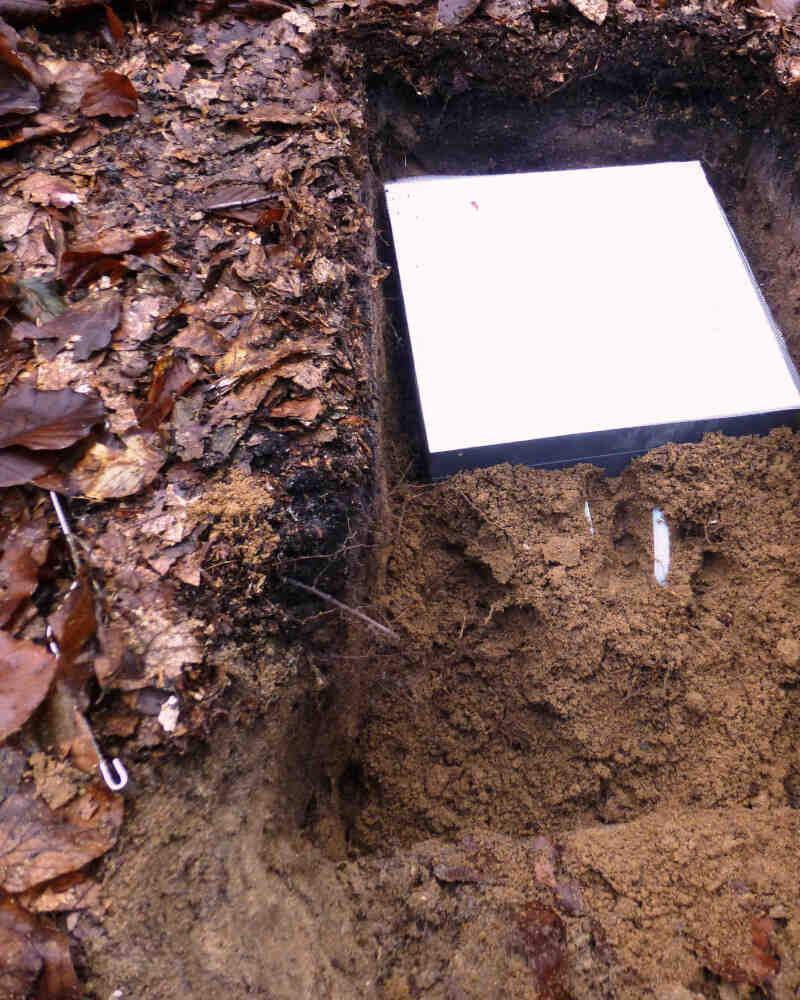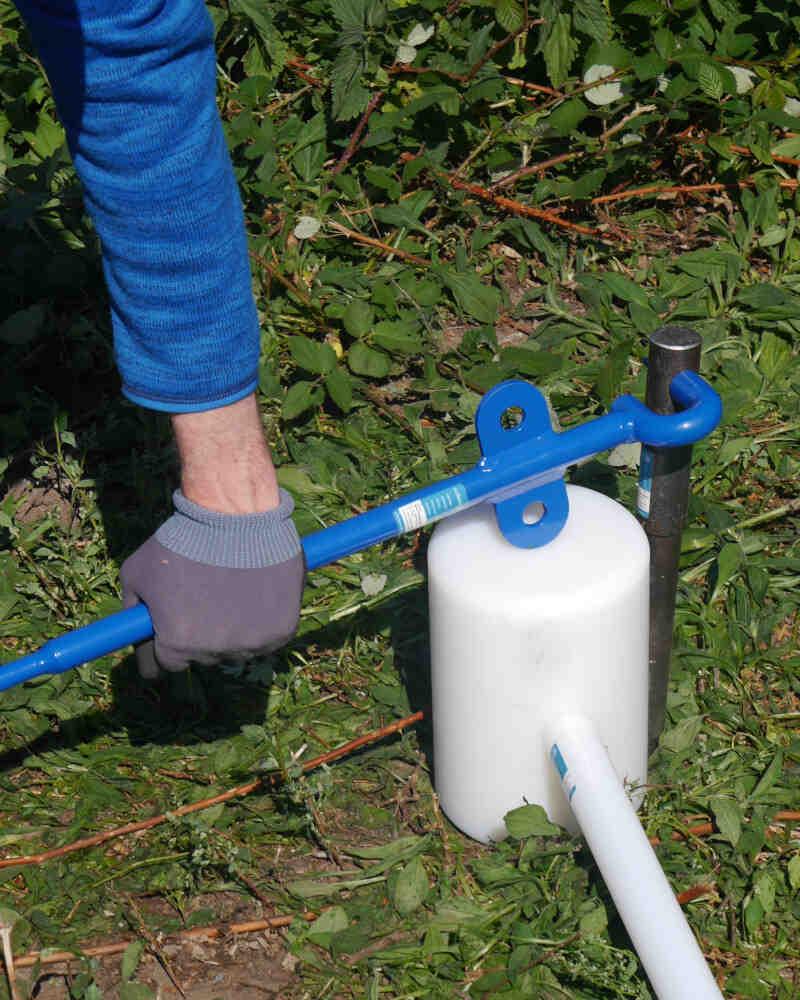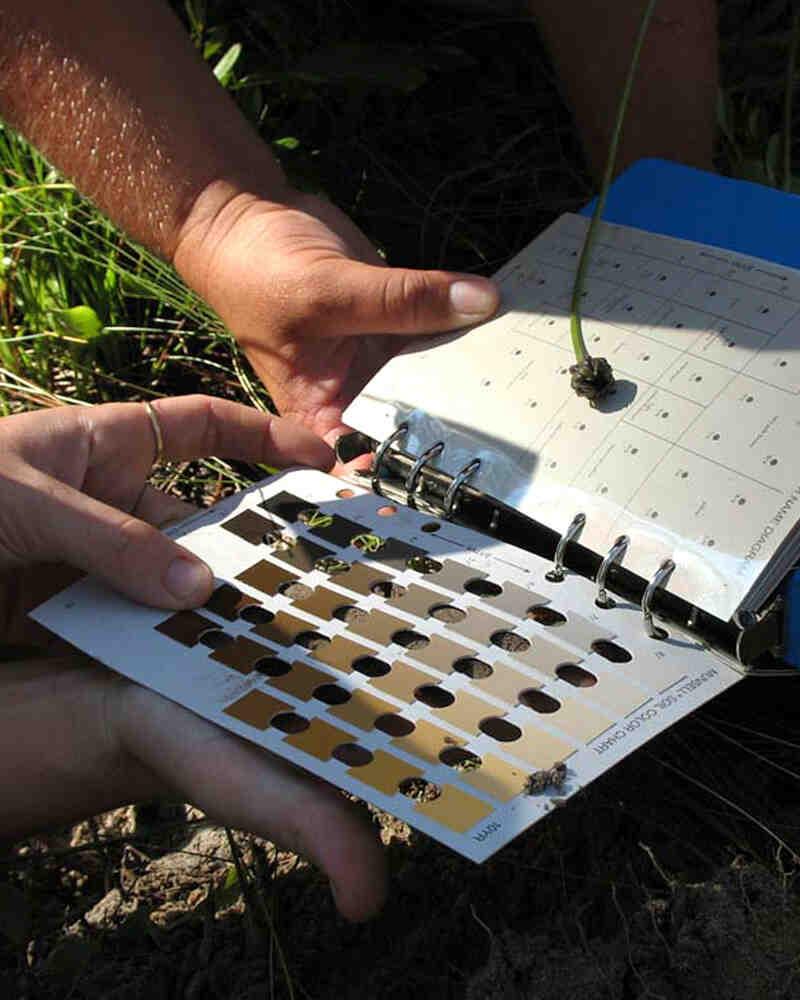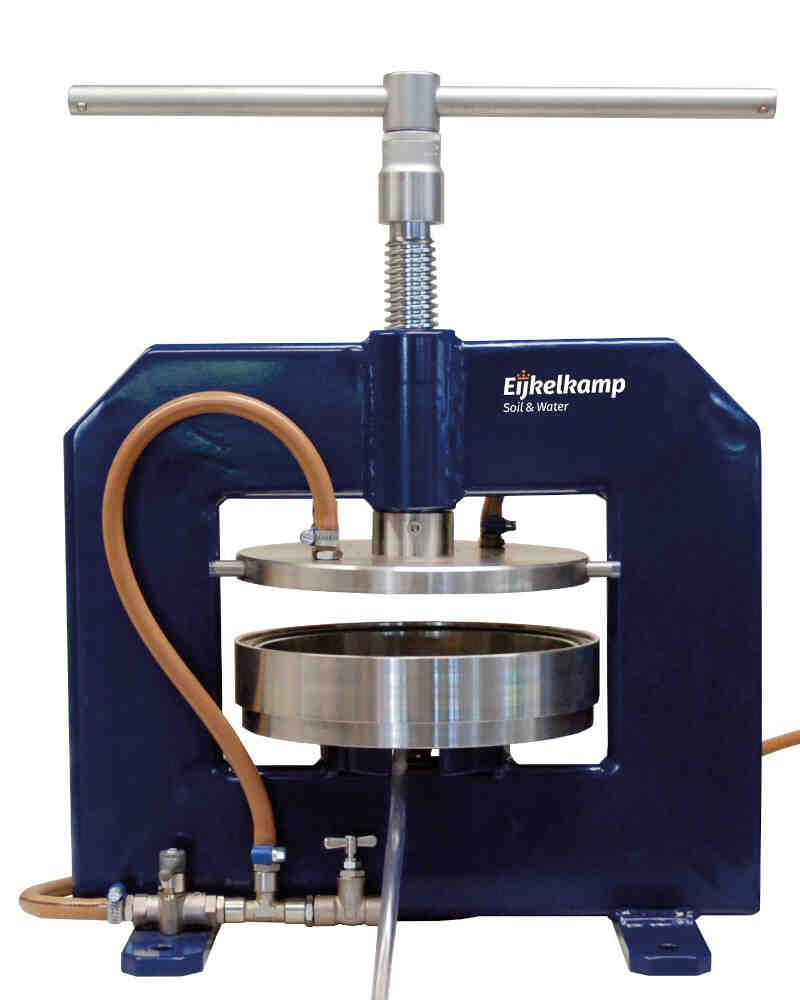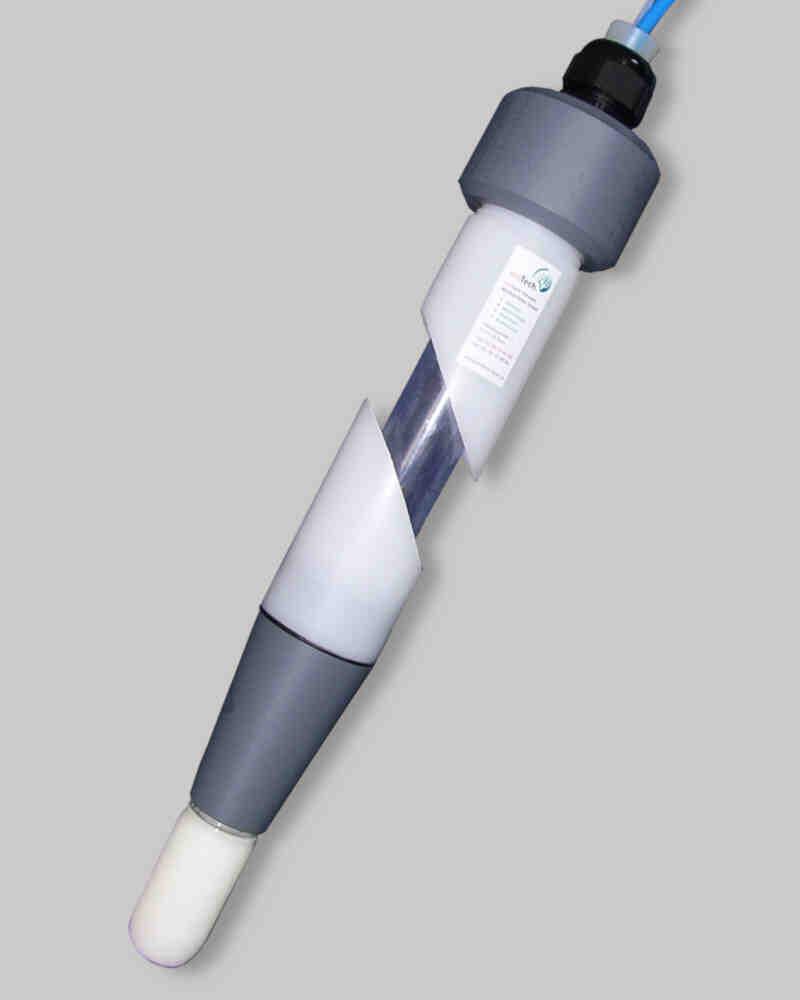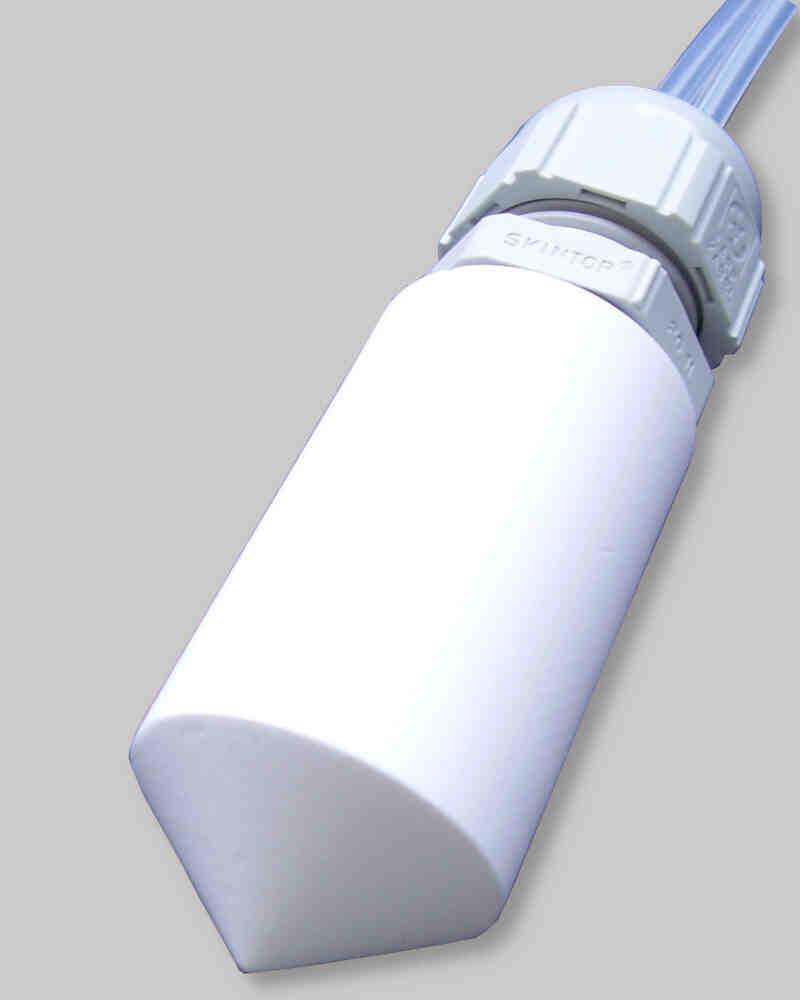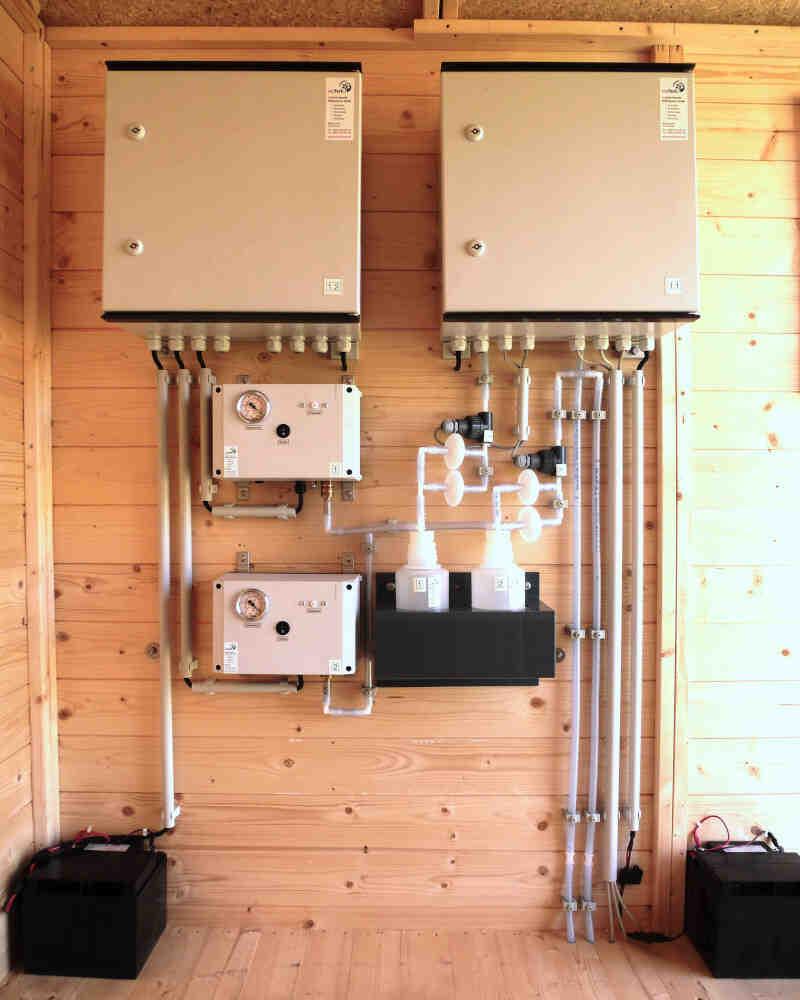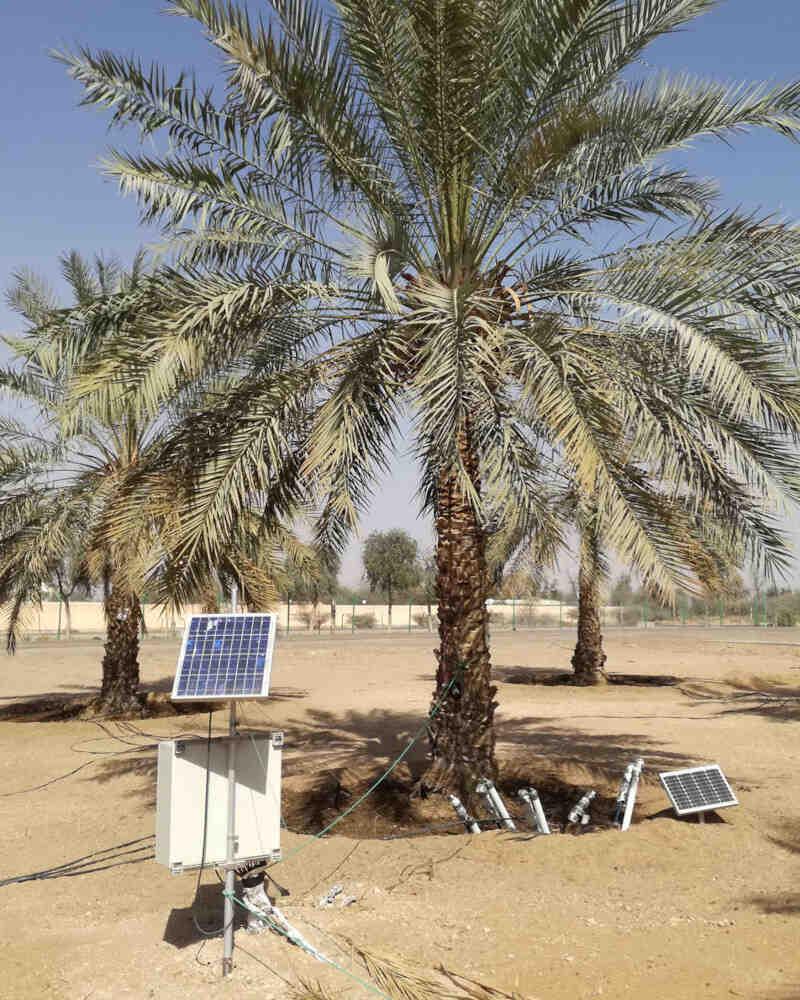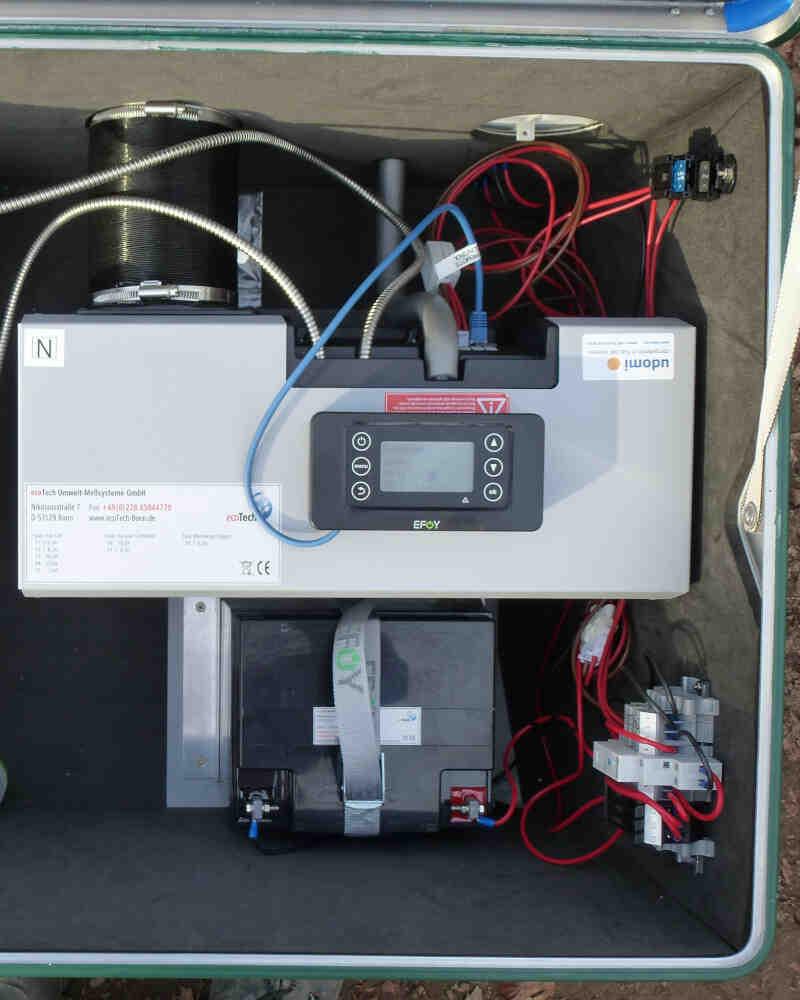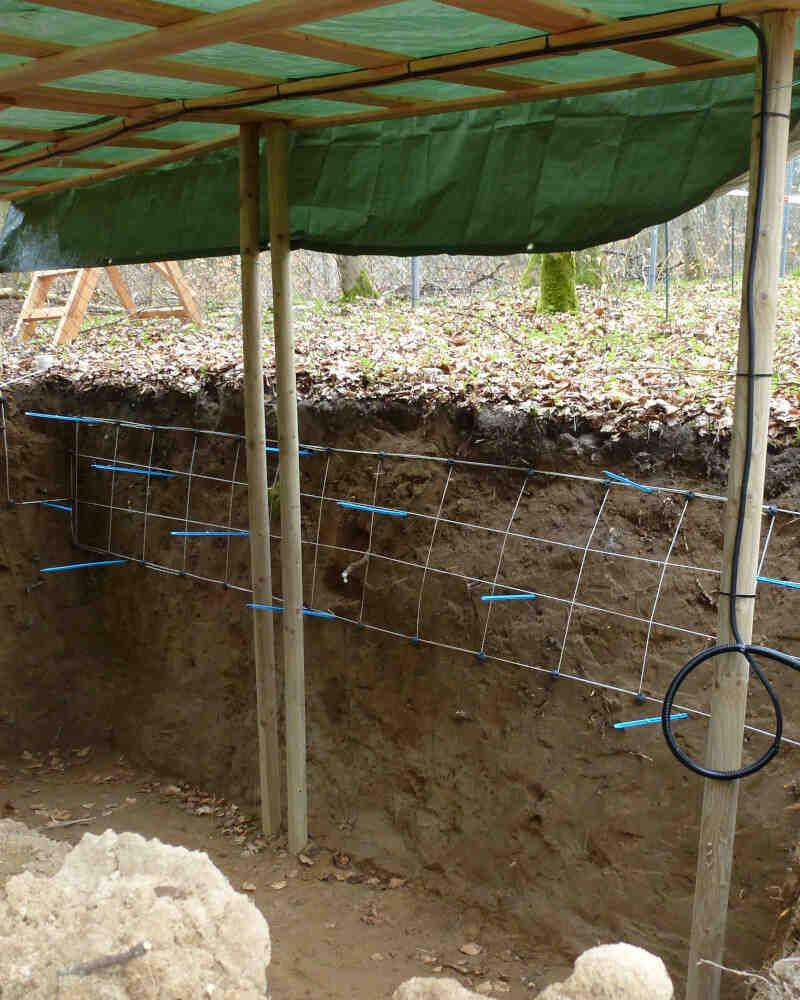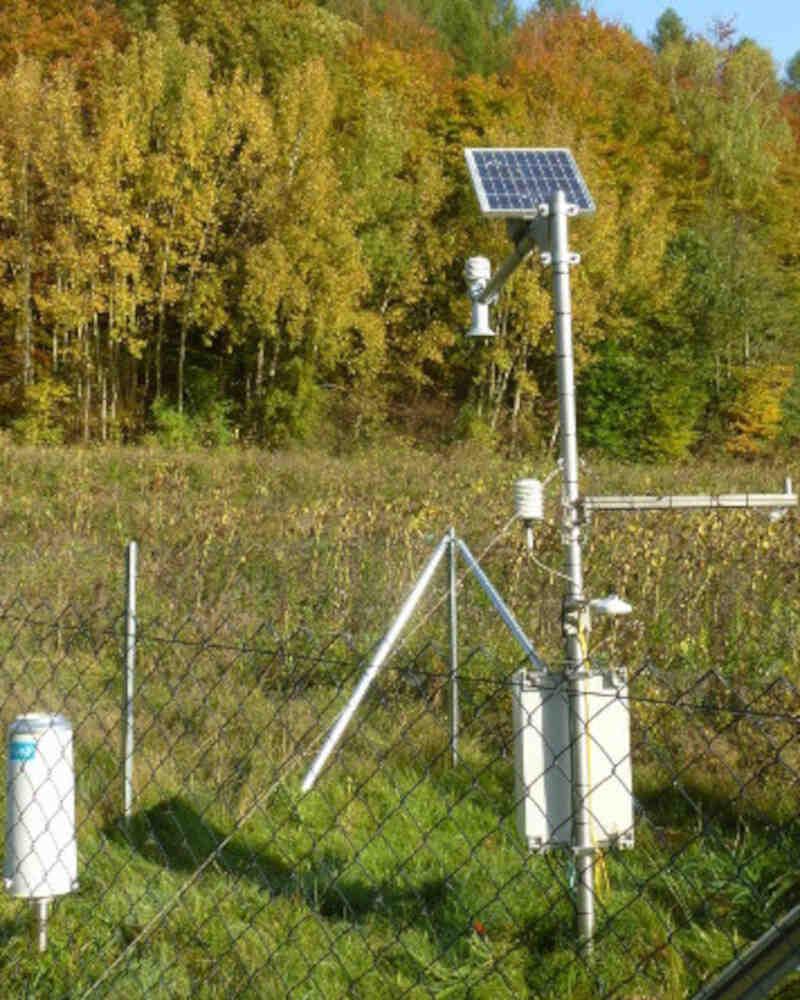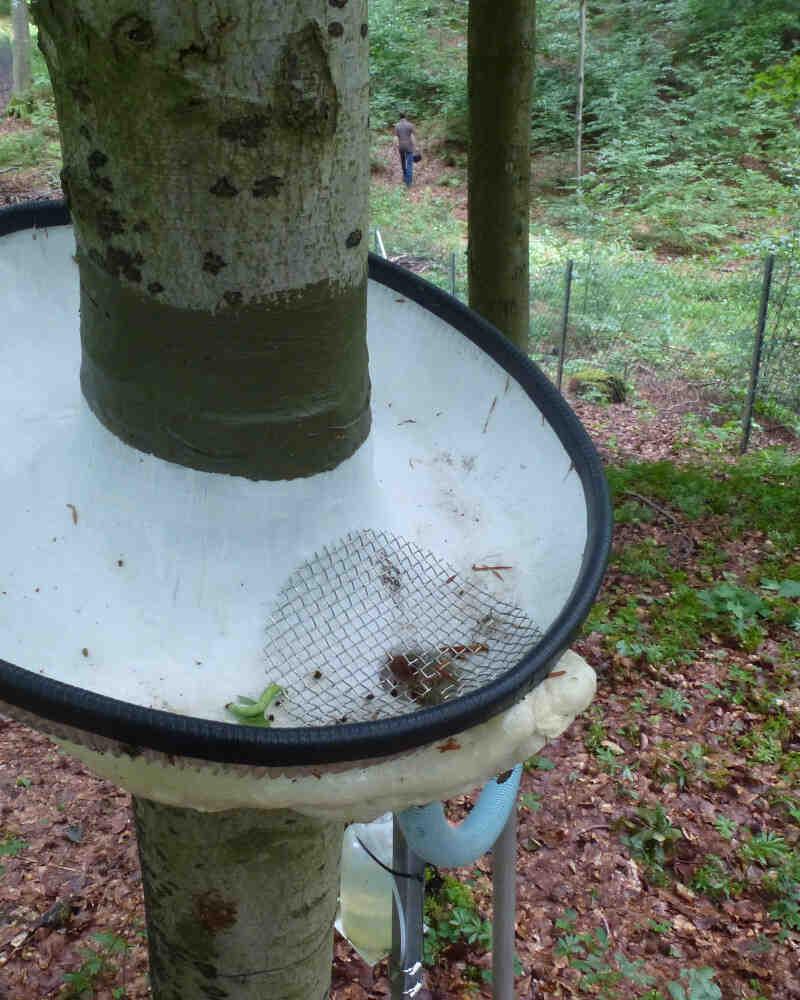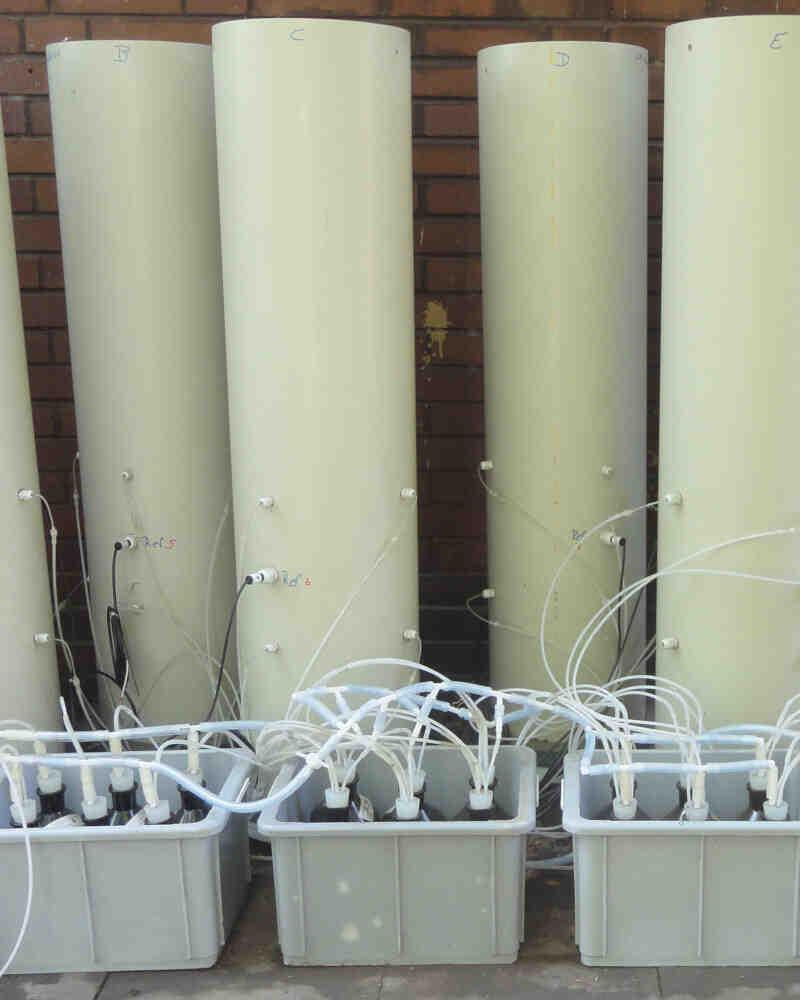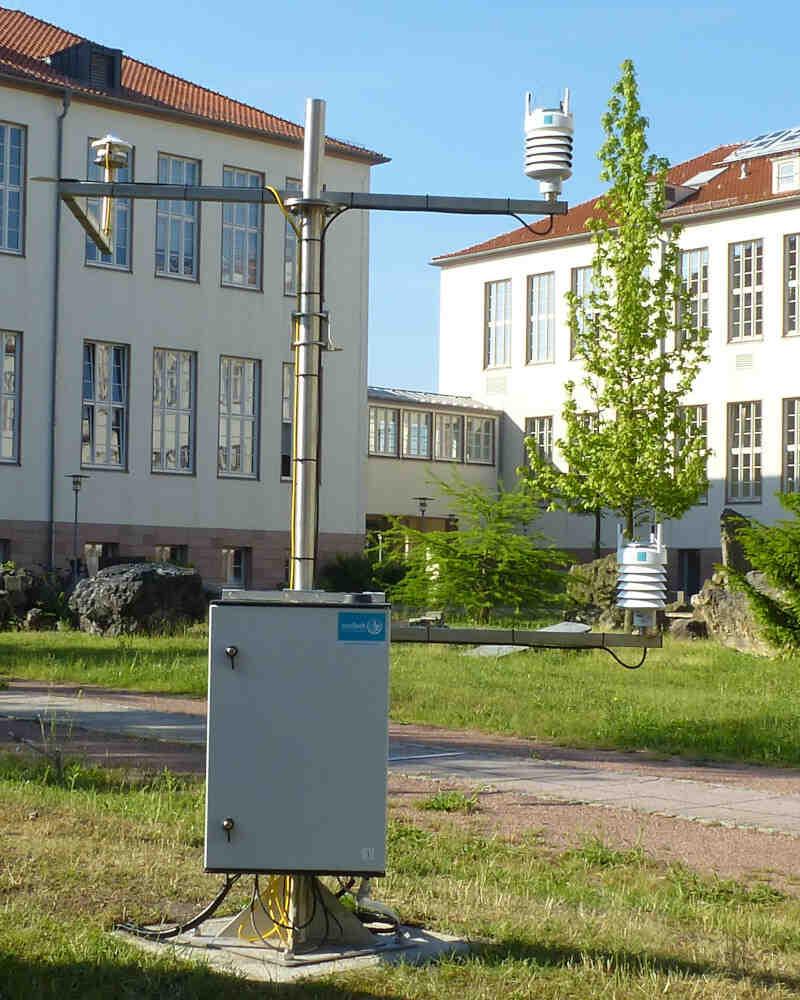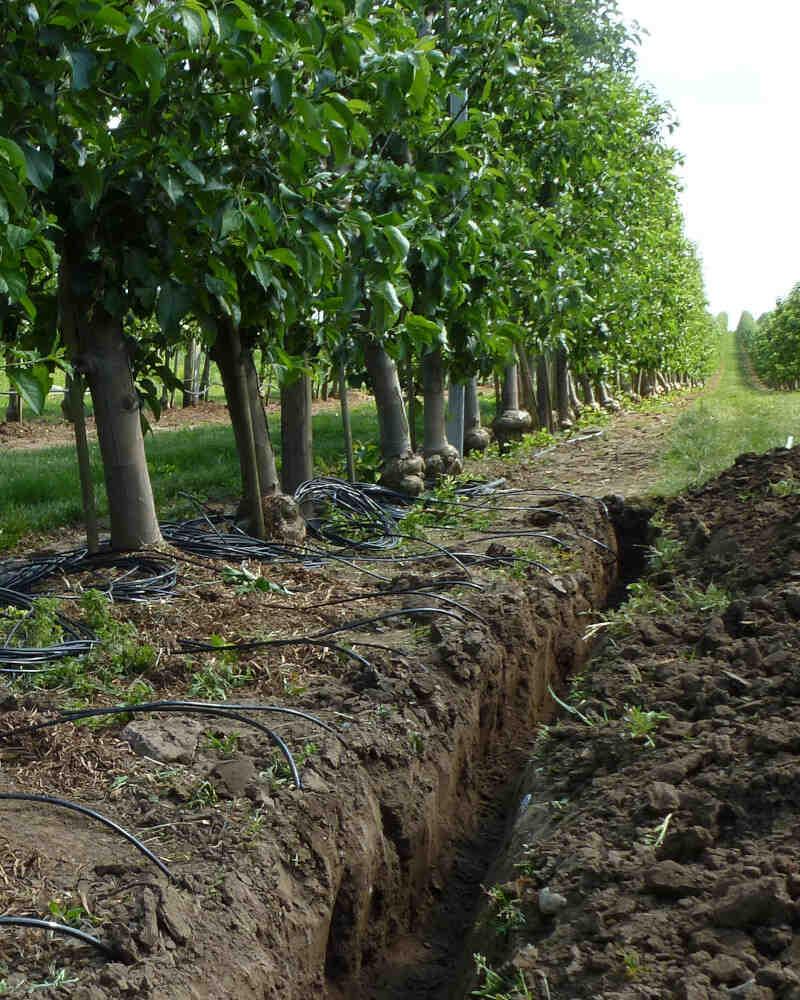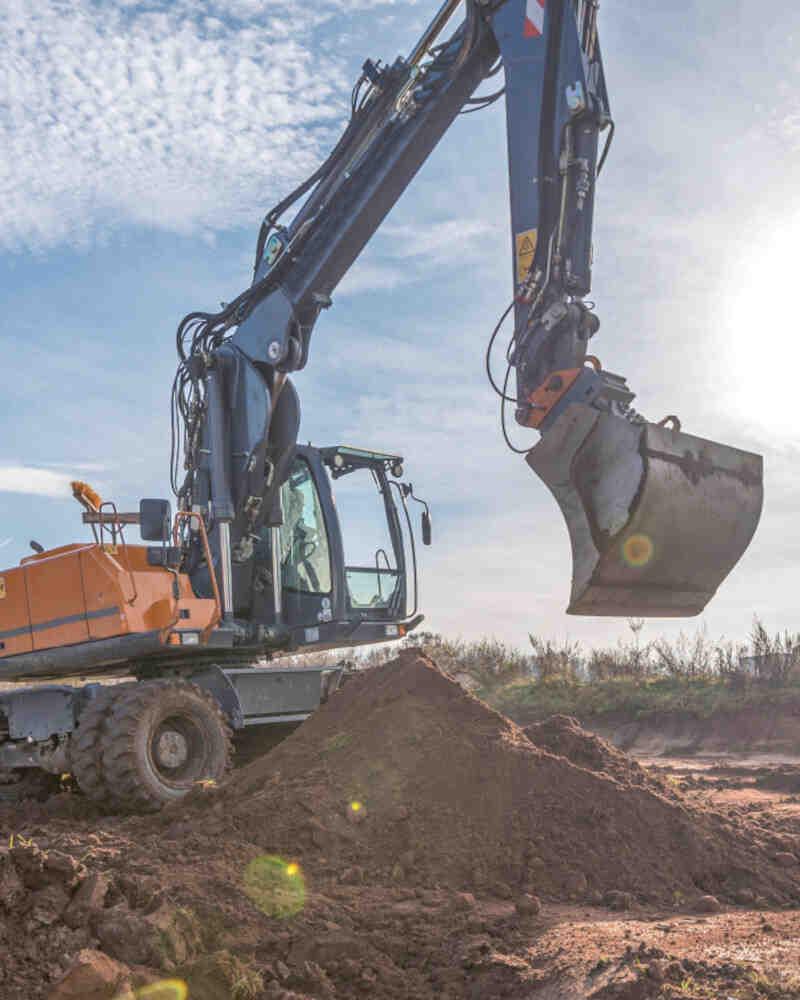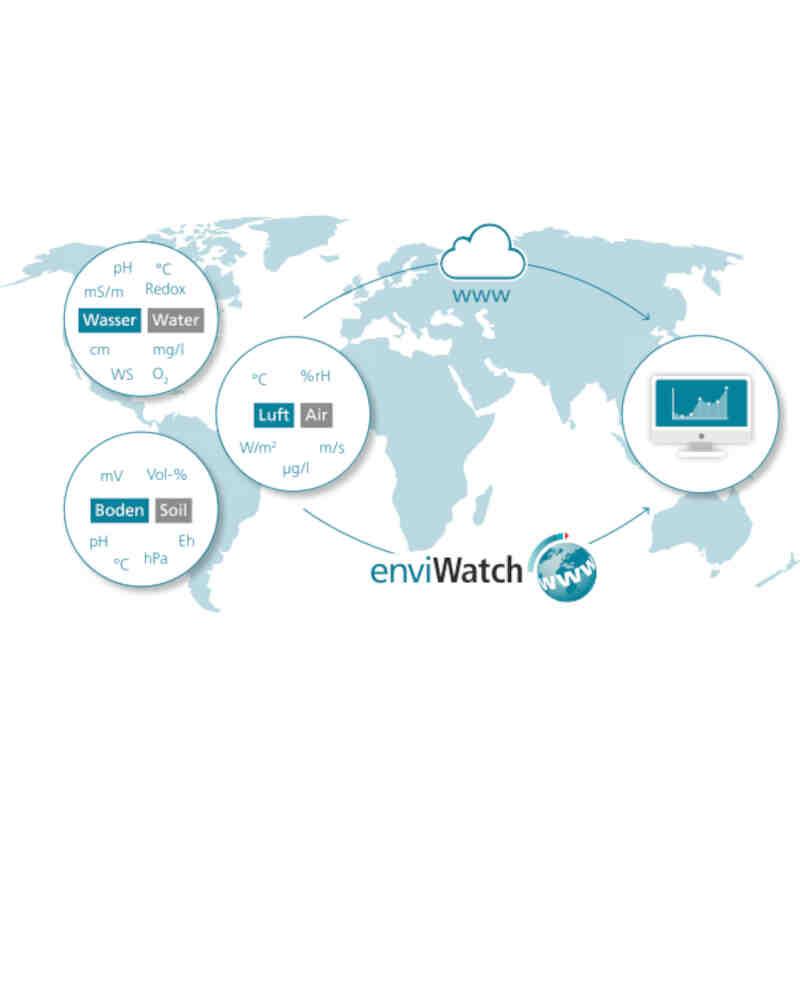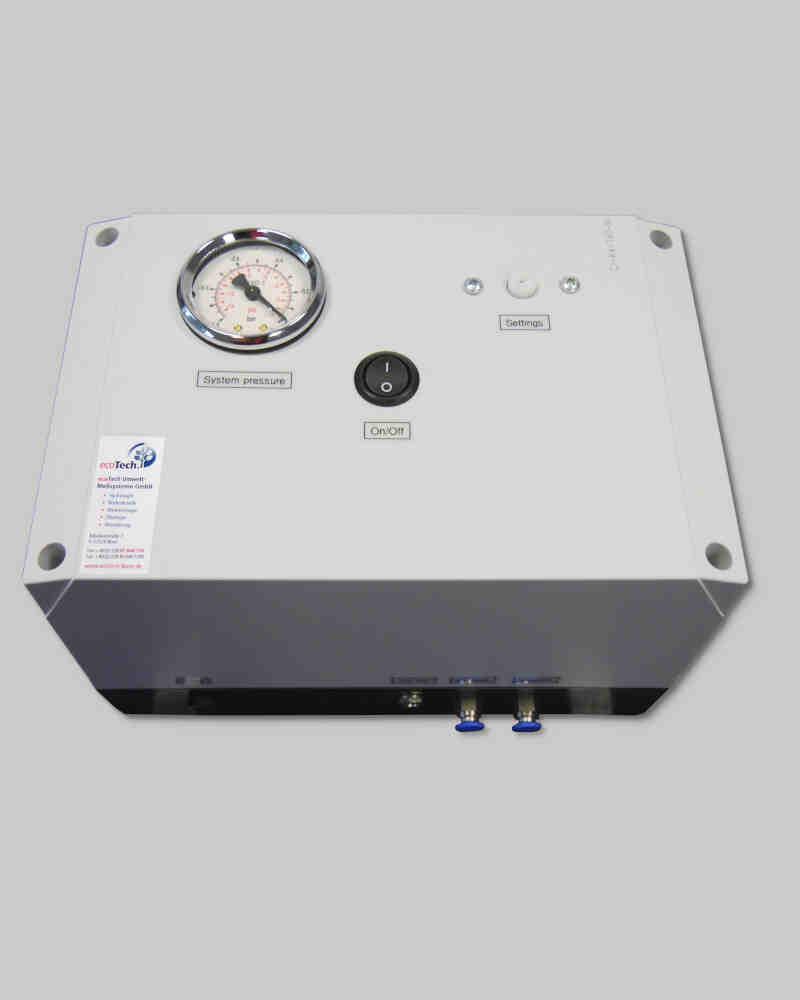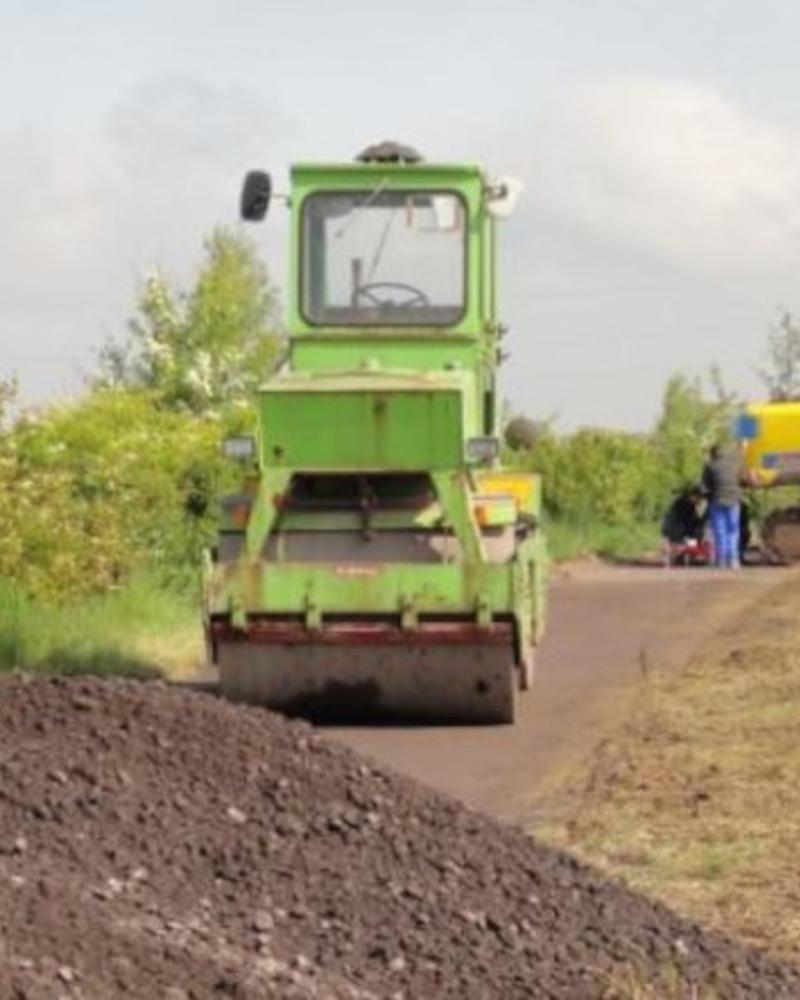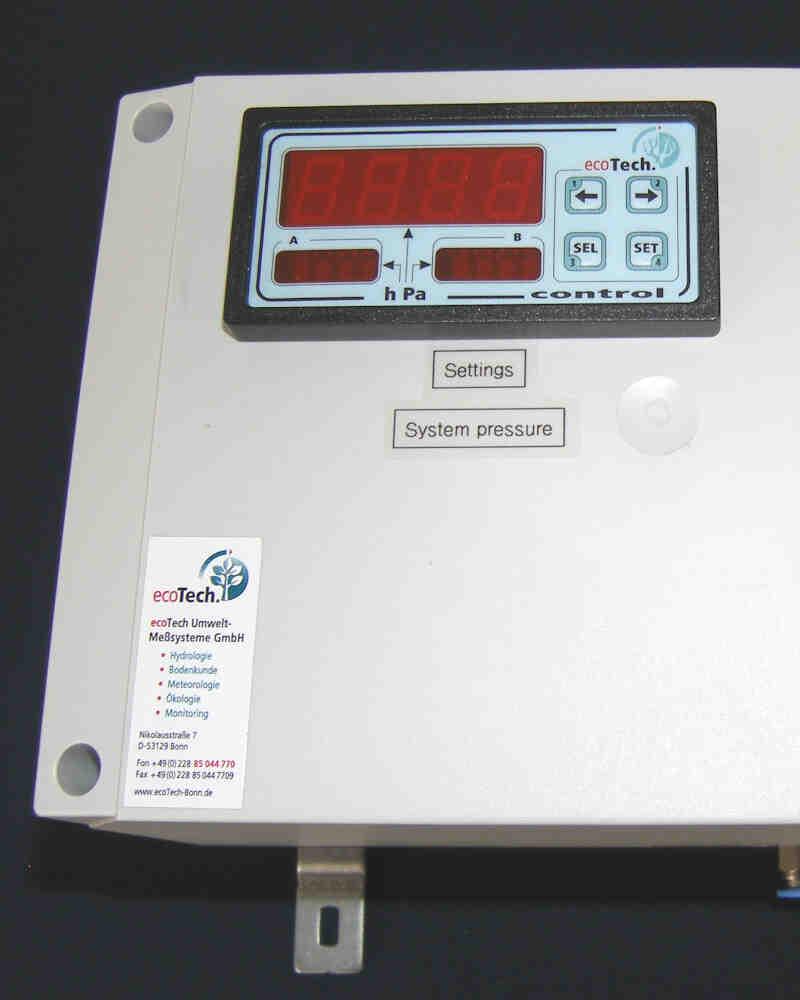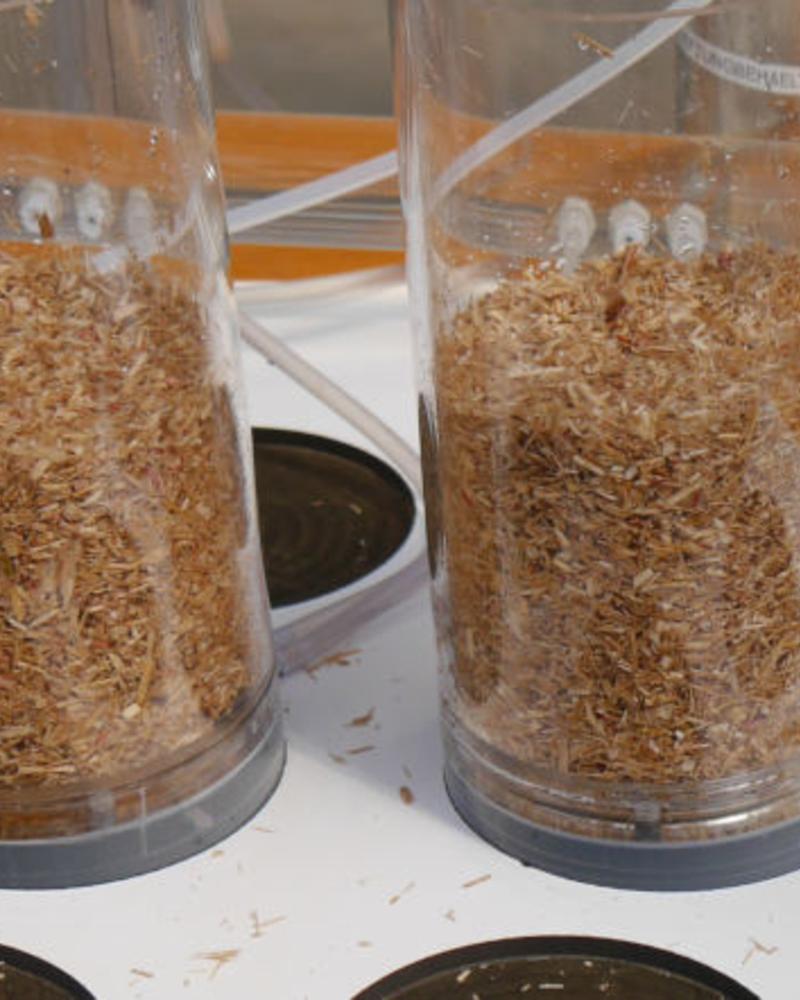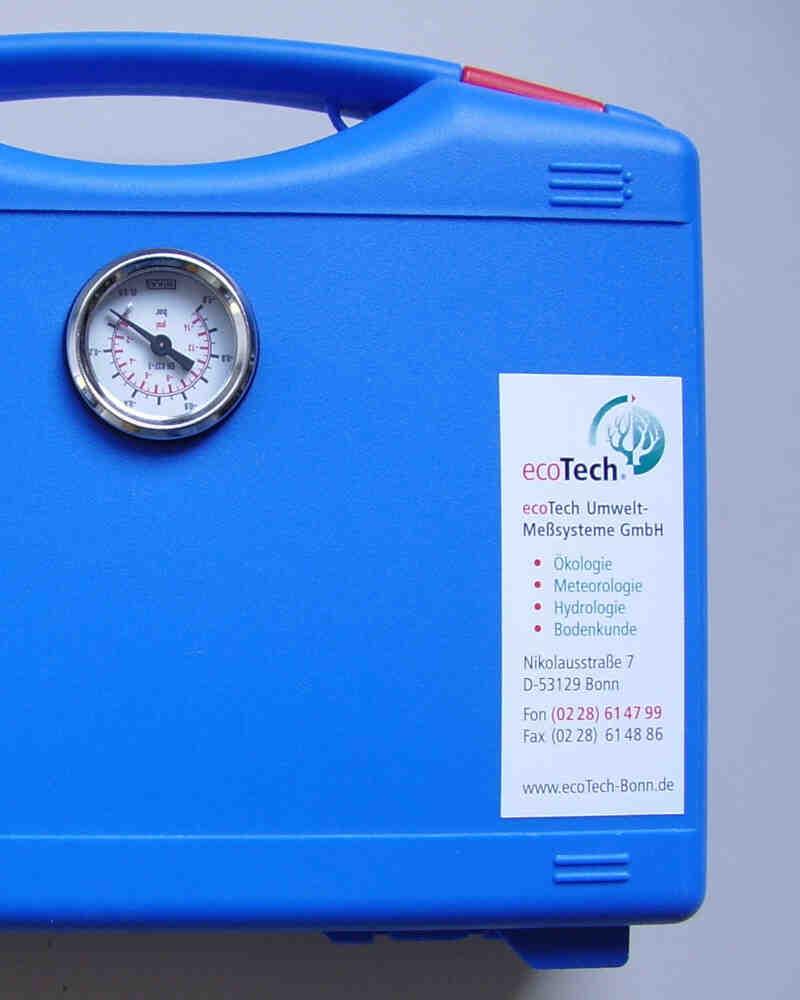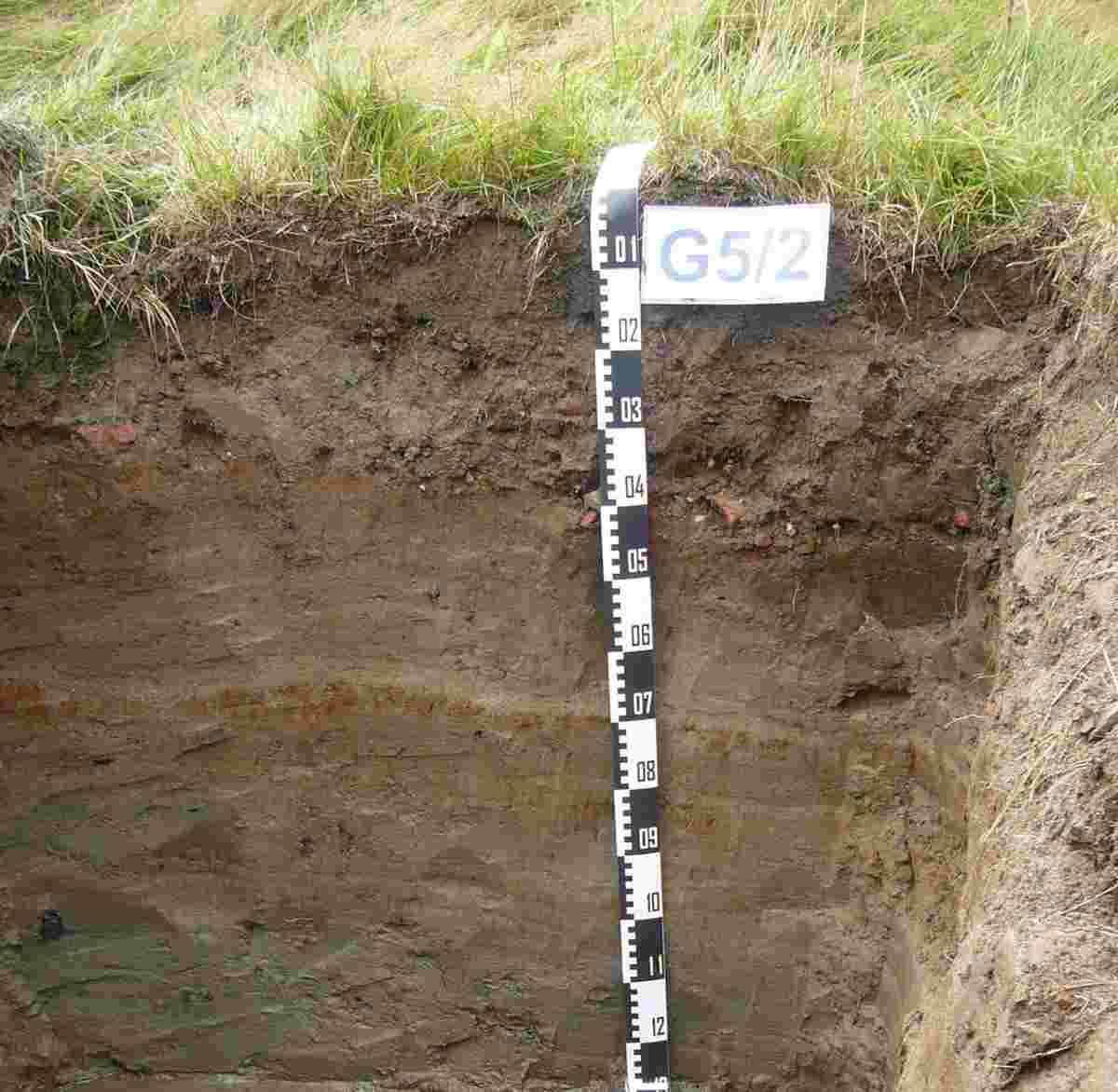FAQ - frequently asked questions
Suction cups and suction plates have a decisive advantage over the extraction of drill core samples or other soil samples: the observation of concentration changes at the same place as often as required. The random influence of small-scale concentration differences in the soil profile on the results of different sampling times is excluded - in contrast to soil sampling and subsequent extraction.
We offer suction cups and suction plates made of the same materials, the sampling is the same or very similar with both types of equipment. The question which geometry is better for the planned application (cups or plate) depends on various other factors and must be considered in each individual case.
In our opinion, suction plates should be installed laterally in a gallery below an undisturbed soil area. This usually requires an open soil profile or a trench, which means that a corresponding amount of space is required. The use of suction plates is therefore limited if the area is small, the extraction depth is large or the substrate is problematic for installation due to its high skeleton content or pourability. In all these cases, suction plates can be installed more easily and cause less disturbance to adjacent soil areas. The most important disadvantage of suction cups is that they extract an undefined volume of soil. The size of the area sampled concentrically around the filter body depends - apart from soil moisture and hydraulic conductivity - on the sampling time and the applied negative pressure or pressure difference between the vacuum system and the water tension of the soil. The concentration measured in the solution cannot easily be converted into a seepage load.
While working with suction plates the situation might be different under certain conditions: The installation effort for suction plates is usually much greater than that for suction cups. However, suction plates have two major advantages over suction cups when calculating for example nitrate leaching quantities (NO3 load): 1. they have a larger surface area and 2. the NO3 concentrations and seepage quantities determined can be related to a defined surface area (Weihermüller 2020).
Regarding 1: The larger the sampled area, the more representative the result is, since differences in flow velocity or different NO3 loading of the pores are better represented on average.
Regarding 2: The area reference (and defined area of action) of the suction plates is a basic prerequisite for a calculation of nitrate loads from measured leachate quantities and concentrations to be permissible at all.
Soures:
Weihermüller, Lutz: In-situ soil water sampling. In: Field Measurement Methods in Soil Science, Wessel-Bothe, S./ Weihermüller, L. (eds.). Stuttgart: Borntraeger 2020, S. 99-132.
In short: quarterly to six months. Explanation:
Typically, it is good practice while working with pH combination electrodes in lab routines to check the pH electrodes daily with buffer solutions and recalibrate them if necessary. Such daily recalibration of built-in soil pH electrode is neither feasible with acceptable effort, nor useful.
This applies for both, field and laboratory experiments in vessels or soil columns. A calibration is always associated with uninstalling the pH electrode and subsequent re-installation (see 5.2). The replacement is not possible without interference at the interface electrode/ substrate, so that a frequently repeated calibration must degrade the measurement result with time.This applies even when measurements run over a longer period (e.g. months) and a shift of the calibration values by actual electrode drift has to be expected over this period. However, from previous experiments and experiences with our pH electrodes, a reasonable interval
for the recalibration can only be estimated. Laboratory tests of Thiele-Bruhn et al. (2015) showed that the measured values of pH electrodes remained stable up to a few mV or up to a few hundredths pH units even after several months of continuous use.
Experiences over a longer period than in Thiele-Bruhn et al. (2015) are available from three field applications, each one lasting from 14 to 18 months (as of December 2015). Those permanently installed electrodes were tested in intervals of several months on their calibration and showed deviations of 0.2 to 0.3 pH units in buffer solutions for pH 4, 7 and 10 for the complete period. Thereby, in all cases a falling tendency of the displayed pH values was recognized. In order to find a compromise between improper interference of the experimental setup by deinstallation for recalibration and following re-installation on the one hand and the best possible calibration values on the other hand, we currently (June 2017) recommend a recalibration in quarter- to half-yearly intervals. According to our previous experience, this should lead to deviations in the range of approx.0.1 pH units. Significantly larger deviations indicate either a pending maintenance of the reference-system or to a technical error which may be located in the reference electrode, the pH electrode or the
measuring system.
As far as we know there is no time limit. We have been producing our redox electrodes in close cooperation with Prof. Dr. Tim Mansfeldt, University of Cologne since 2004. During this time we have not become aware of any case in which the continuous use of these electrodes has caused a problem. In a project by Professor Mansfeldt himself, eighteen of these electrodes have been in continuous use since March 2010, some of them almost all year round in the groundwater area with temporary overflow of > 150 cm water column. All sensors are still functioning perfectly today (status 09-2020).
Our experience of > 25 years with soil moisture sensors tells us so far that almost all low priced soil moisture sensors have serious disadvantages. These are either a lack of accuracy or a comparatively short lifetime. In the worst case both come together. We have deliberately kept our range of sensors for water content and water tension very small, because in addition to a high degree of accuracy and a long service life, which we have verified ourselves, we place more value on continuity and expertise than on erratic reactions to movements in the market. Nevertheless, we are in some constant development process with the constant improvement of our self-produced sensors.
According to the Geological Service NRW in Krefeld, 3-4 working days are generally sufficient for dewatering of 100 ccm soil sample rings with samples of medium grain size and pressure levels up to 300 hPa. The equilibrium setting is delayed with
a) larger sample volume,
b) increased clay content and
c) higher pressure values
and can then last up to several weeks. In the Institute of Soil Science at the Christian-Albrechts-University of Kiel, the following drainage deadlines are observed:
160 hPa 1-2 weeks
150 hPa 2-3 weeks
300 hPa 3-4 weeks
500 hPa 2-4 weeks
The total drainage period is between 10 and 13 weeks.
If you have any further questions about these specifications, we will be happy to put you in touch with the relevant contact person.
In order to be able to continuously record data at the same measuring point, even over many years!
Explanation: The main cause of ageing of measuring systems for redox and pH is the ageing of the reference electrode. Through the separation of the measuring and reference electrodes is the possibility to affect maintenance and later eventual replacement, without having to manipulate the measuring electrode. This is of particular importance, while the measurements of pH and especially redox often only stabilize after a longer period of equilibrium has been established. Maintenance that would require the removal of the Pt and pH electrodes would result in shifting of the measured values and would significantly disrupt the continuity of the measurement.
The service life of a reference electrode can be considerably extended through regular maintenance, so that continuous measurement can be carried out over many years with the same equipment. It is particularly advantageous that the measuring electrodes for redox and pH are not required to be dismantled for cleaning and refreshing the reference electrode, as they remain permanently at the same measuring point.
After intensive consultation with Prof. Mansfeldt, University of Cologne, we jointly decided against further developing our redox electrodes in this direction. From a technical point of view, a probe for multiple measurements at different depths is possible, but in our experience the quality of the measured values would suffer. The main reason for this is the risk of insufficient contact between the Platinum surface and the surrounding soil material.
Explanation: The geometry of our single electrodes is specially designed so that there is minimal disturbance to the soil during installation of the 1 mm Platinum tip. In this way, an intensive contact between the Platinum and the undisturbed soil material is ensured. This cannot be guaranteed from a tubular probe with multiple measuring planes under normal installation conditions. The disturbance of the soil can result in the following circumstances:
1. A borehole has to be drilled for a tubular probe. In most cases, the walls of these drillings are not completely straight; as a result, in some cases it may occur that the Platinum surface has insufficient contact to the soil and Oxygen can find its way through crevices into deeper areas and a reducing environment occurs causing oxidization. This is not often visible when the probe is inserted, but it can seriously affect the measurements.
2. In order to prevent the contact problem mentioned in point 1, it is not advisable to use a smaller borehole diameter to force contact between the probe and soil. A consequence of pushing a probe into a smaller than intended borehole can result in the scraping of the soil during insertion of the probe along the borehole wall, leading to smearing of zones with different redox potentials.
3. Improving the contact between the probe and the borehole wall by silting up is also not advisable because the redox measured value is generated directly at the contact surface of the electrode / soil. The redox potential from artificially introduced or disturbed material can differ greatly from the indigenous substrate.
4. Even with a perfectly inserted tubular probe, change in the contact pressure of the substrate is to be expected over time. This can be through temperature changes and the different expansion coefficients of the probe and the surrounding soil, or due to different moisture states resulting in swelling and shrinking processes.
Our modules are designed for the simultaneous measurement of Redox and pH values. The electrodes can be attached to measuring modules. Each module can record up to seven measured values/electrodes and is therefore also suitable for small-scale experiments. Multiple modules can be connected for larger quantities of electrodes. It is particularly advantageous to use a reference electrode with the simultaneous use of redox and pH electrodes in the same measuring system. A single reference electrode can be combined with any number of redox and pH electrodes and kept fresh for several years.

